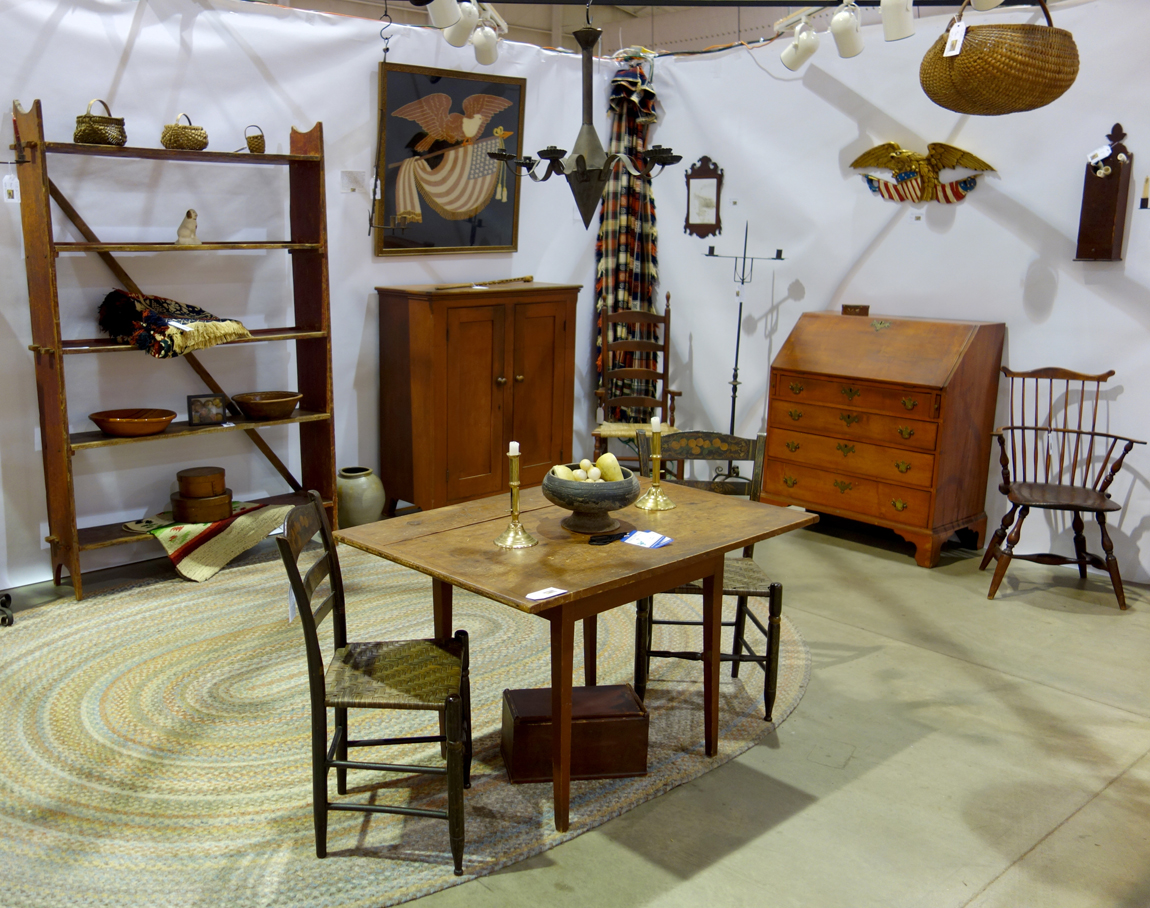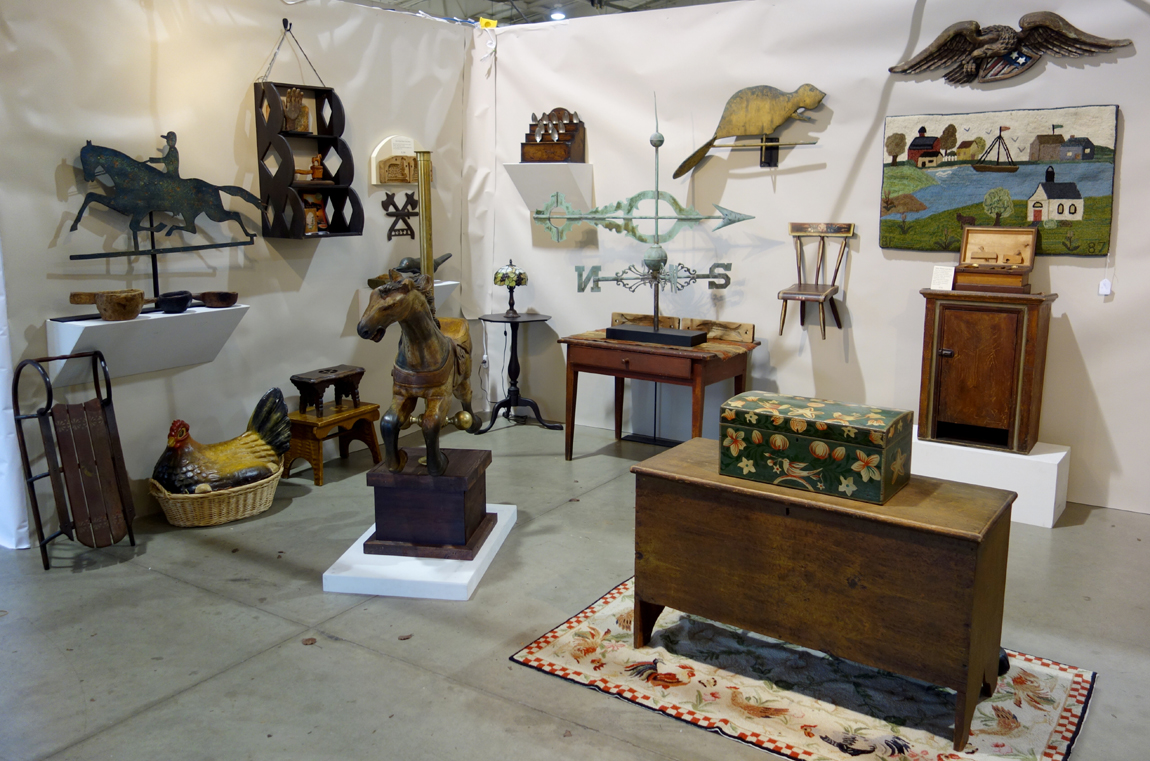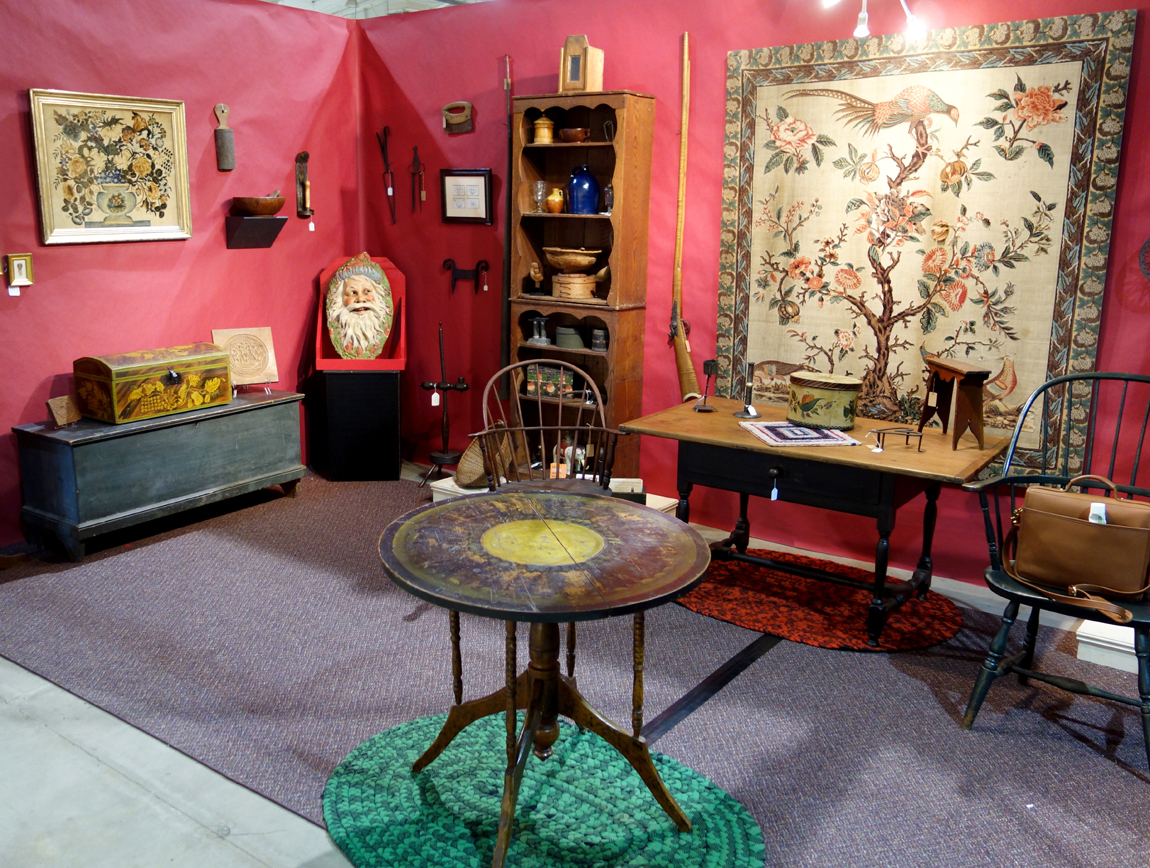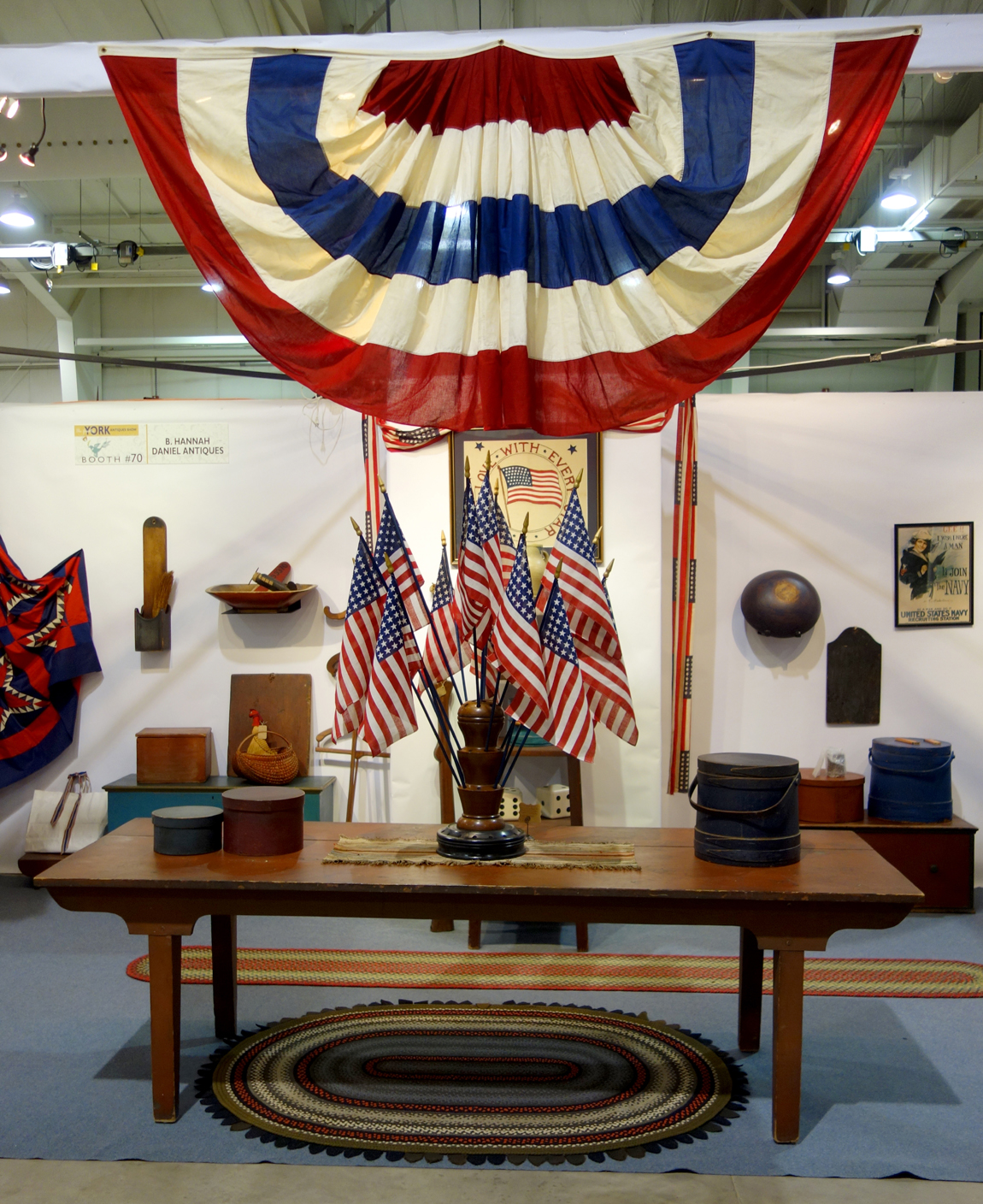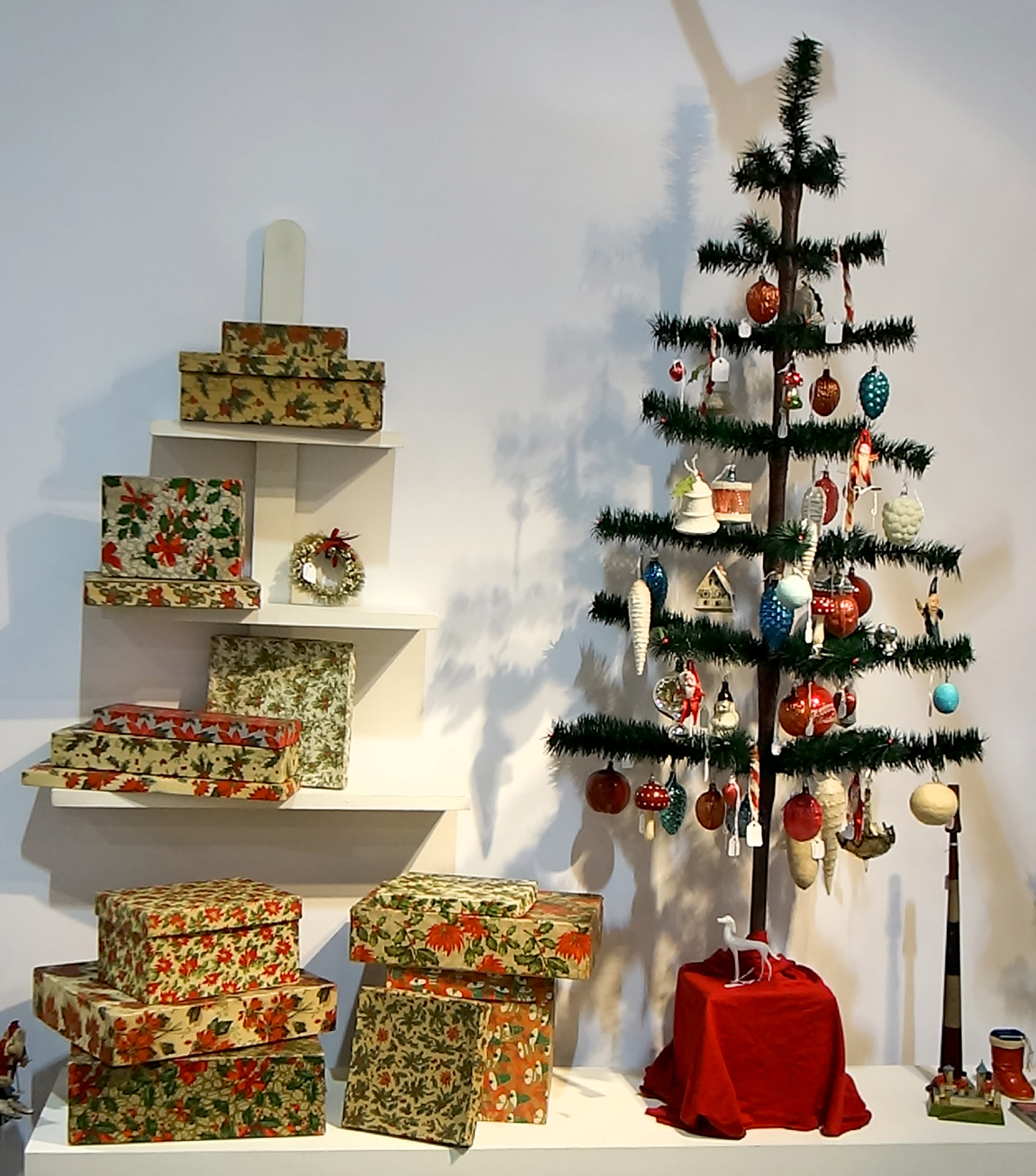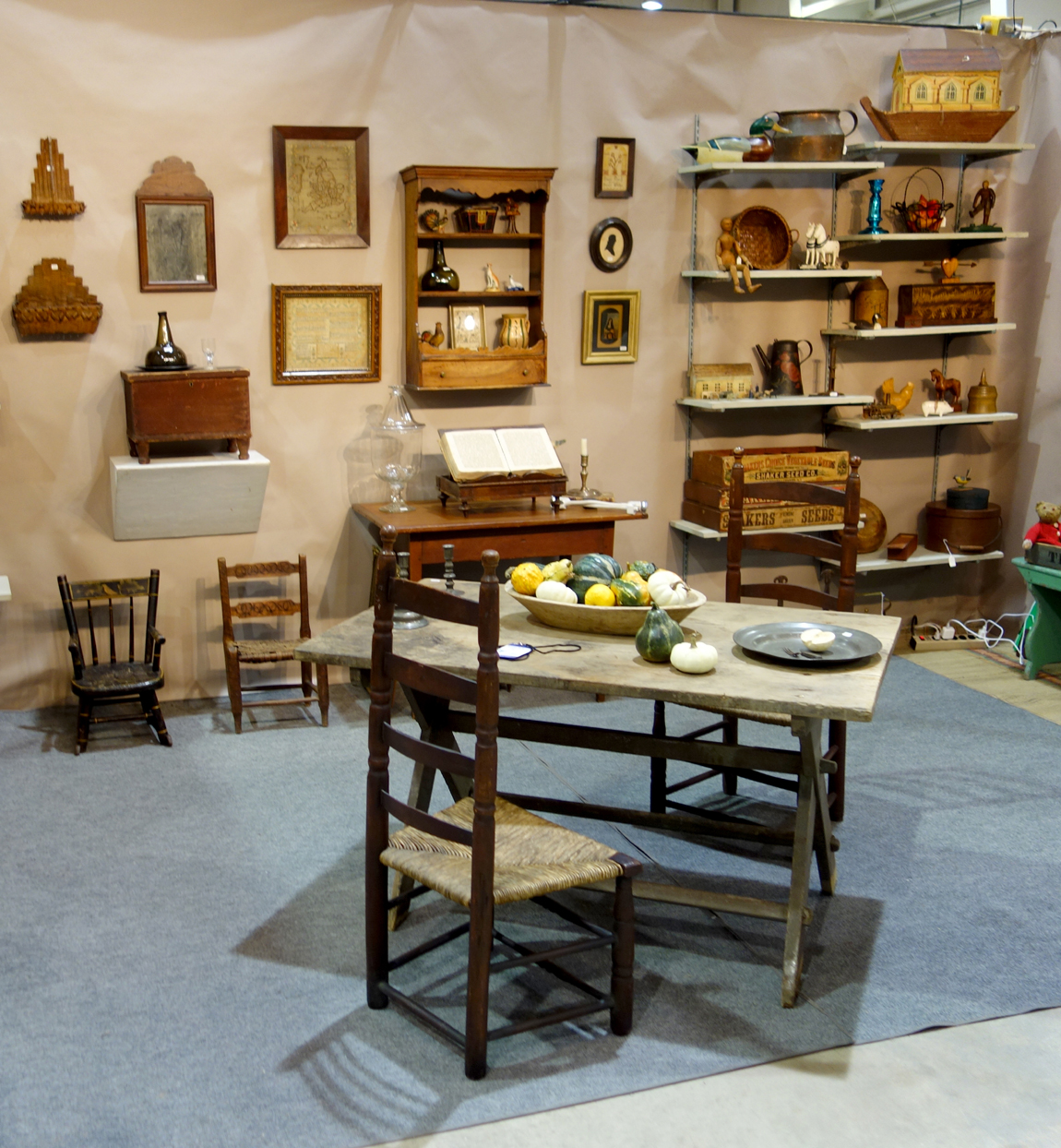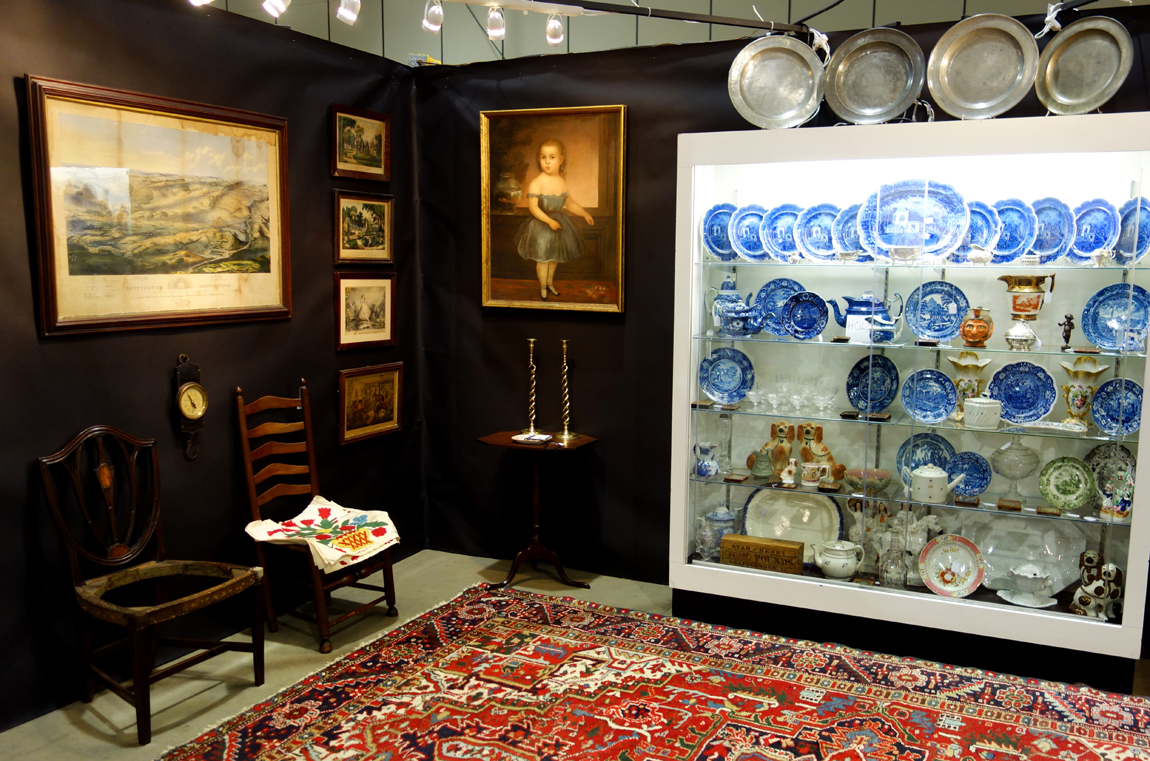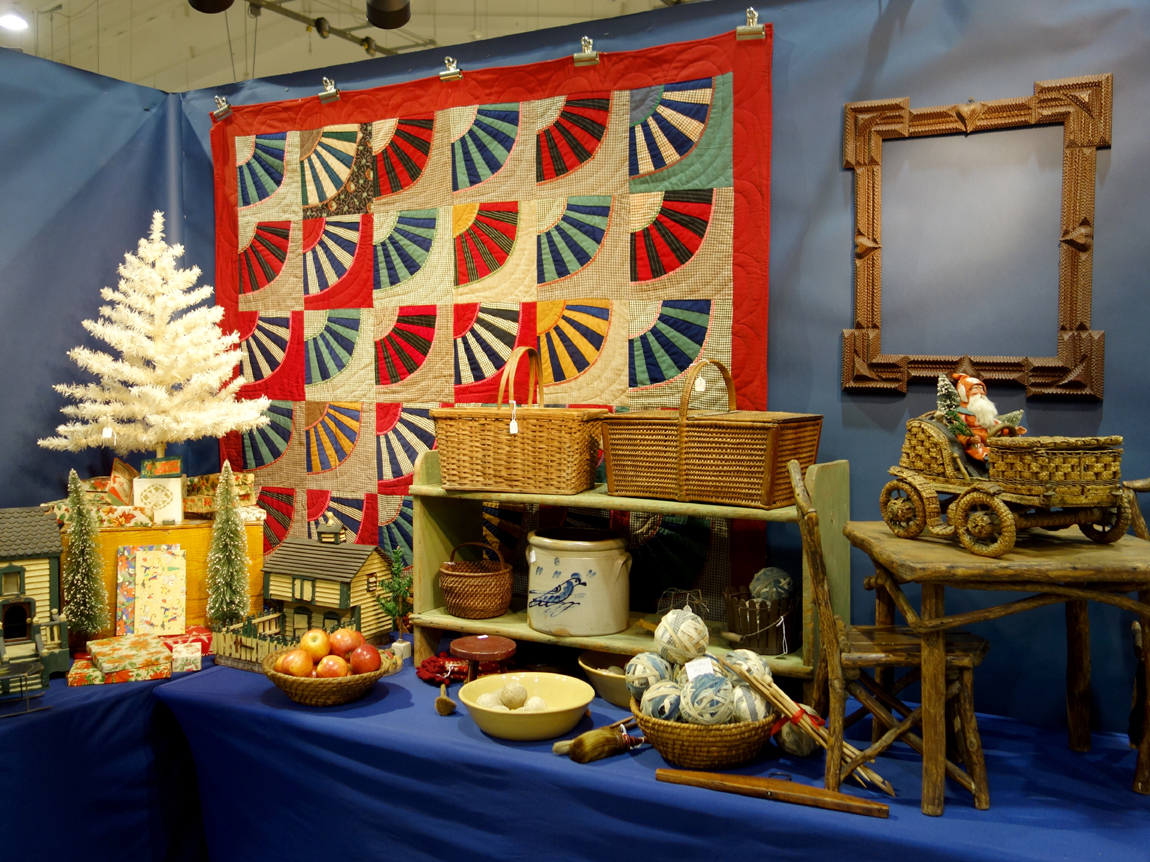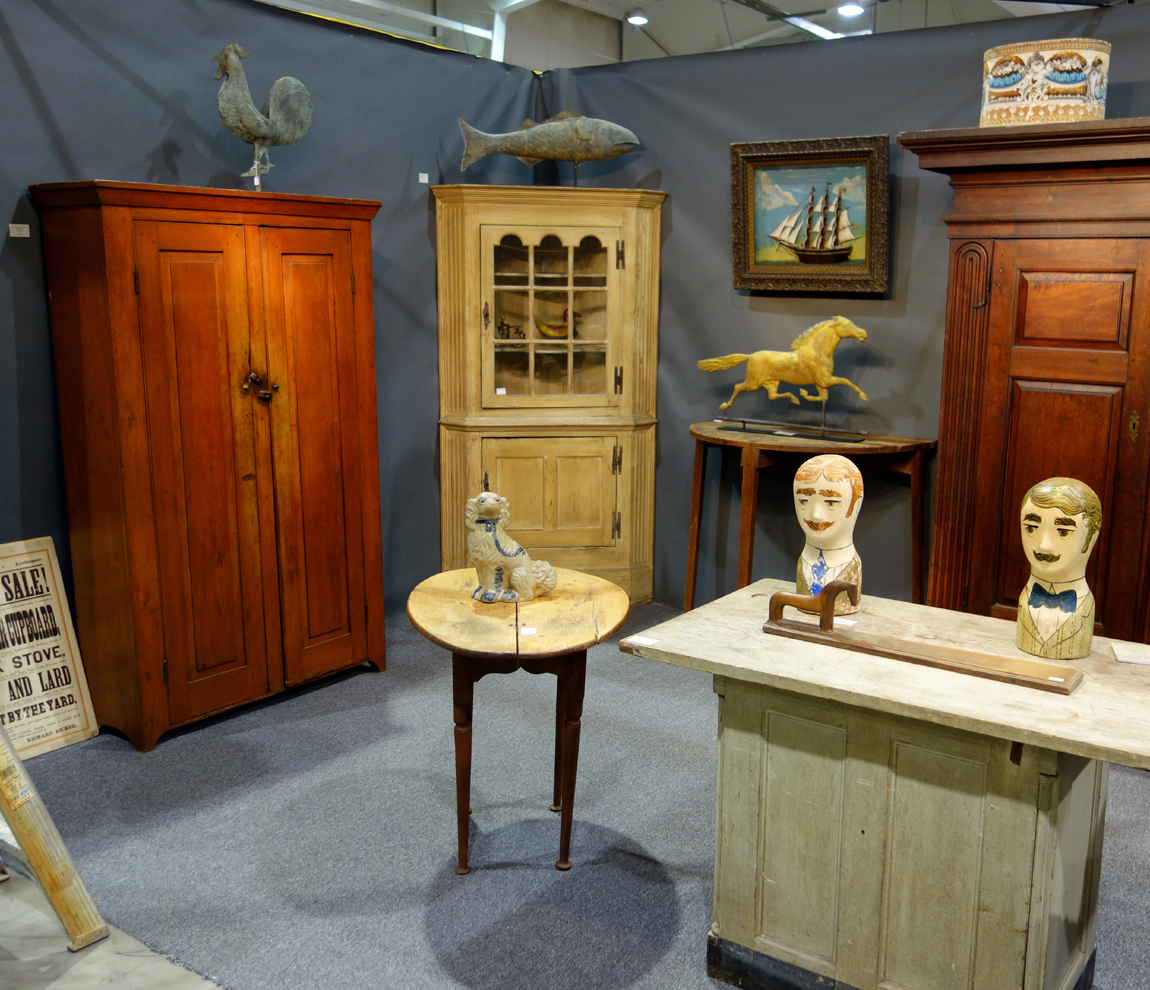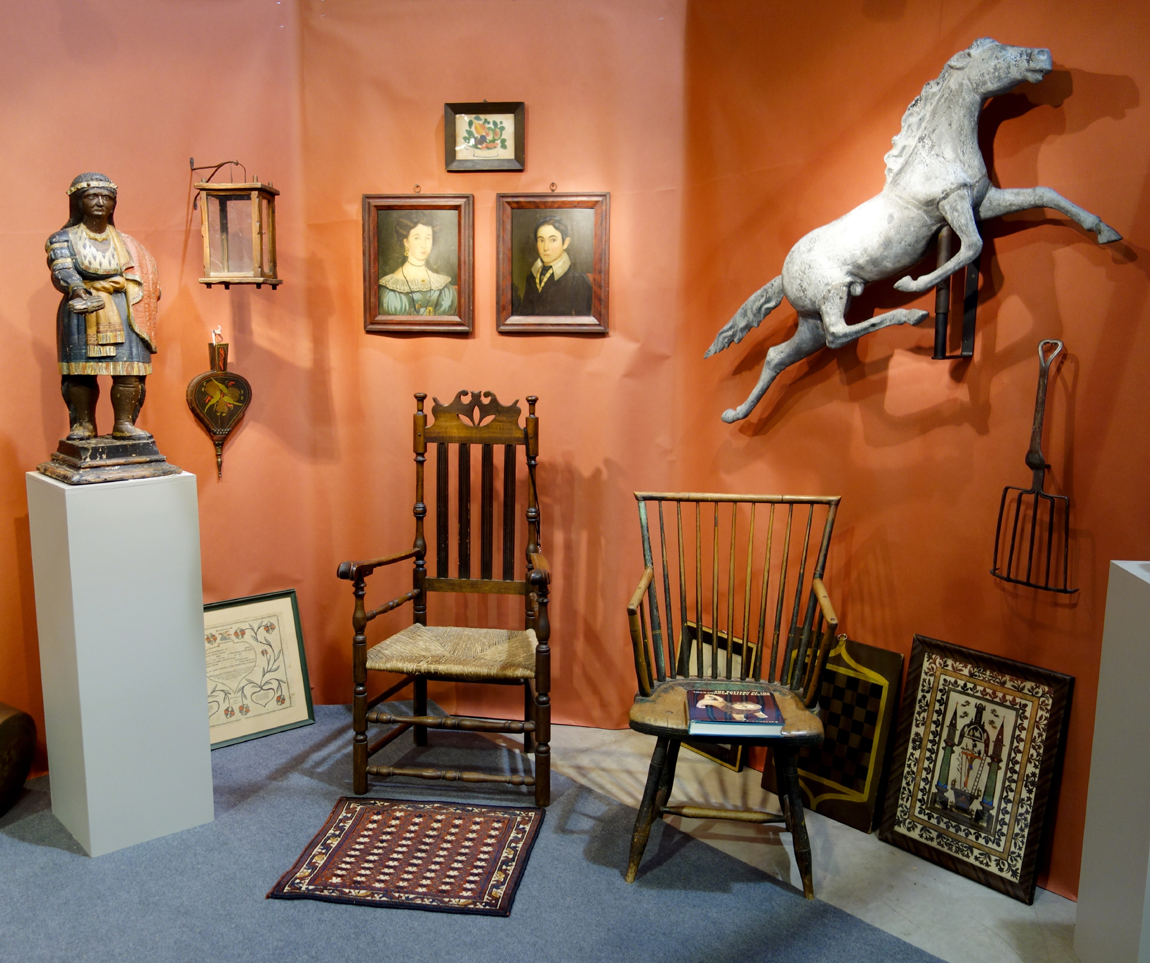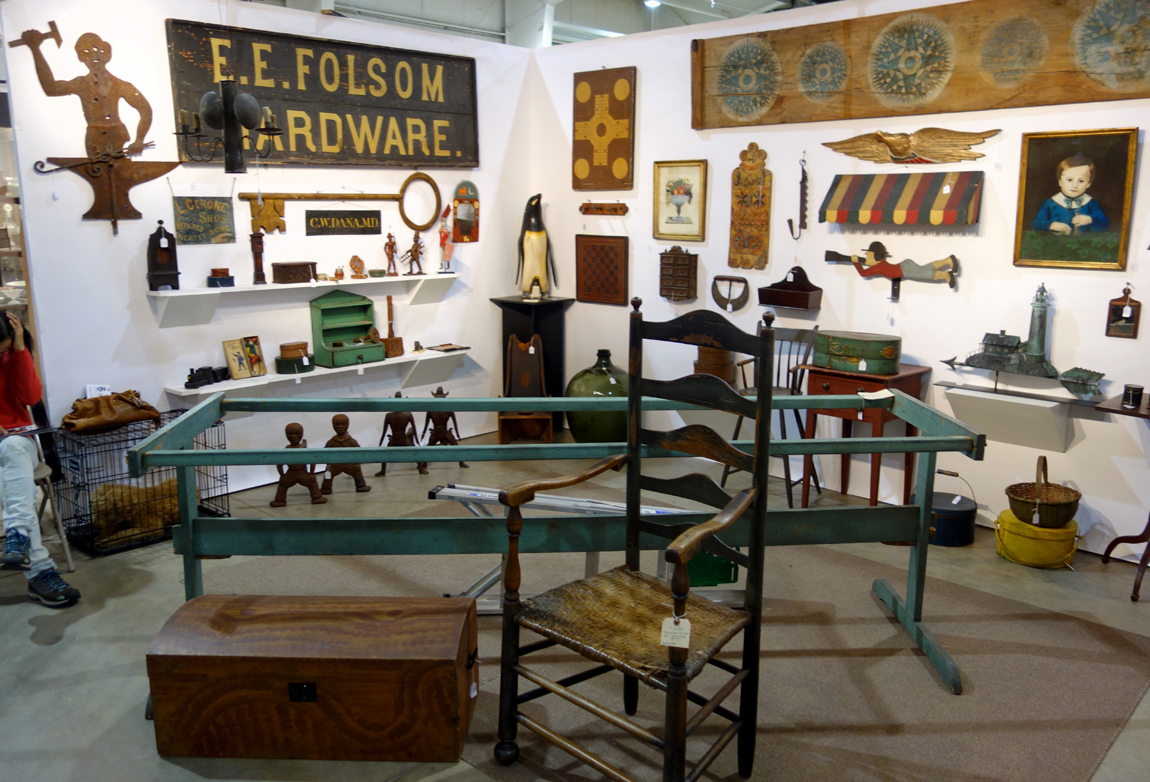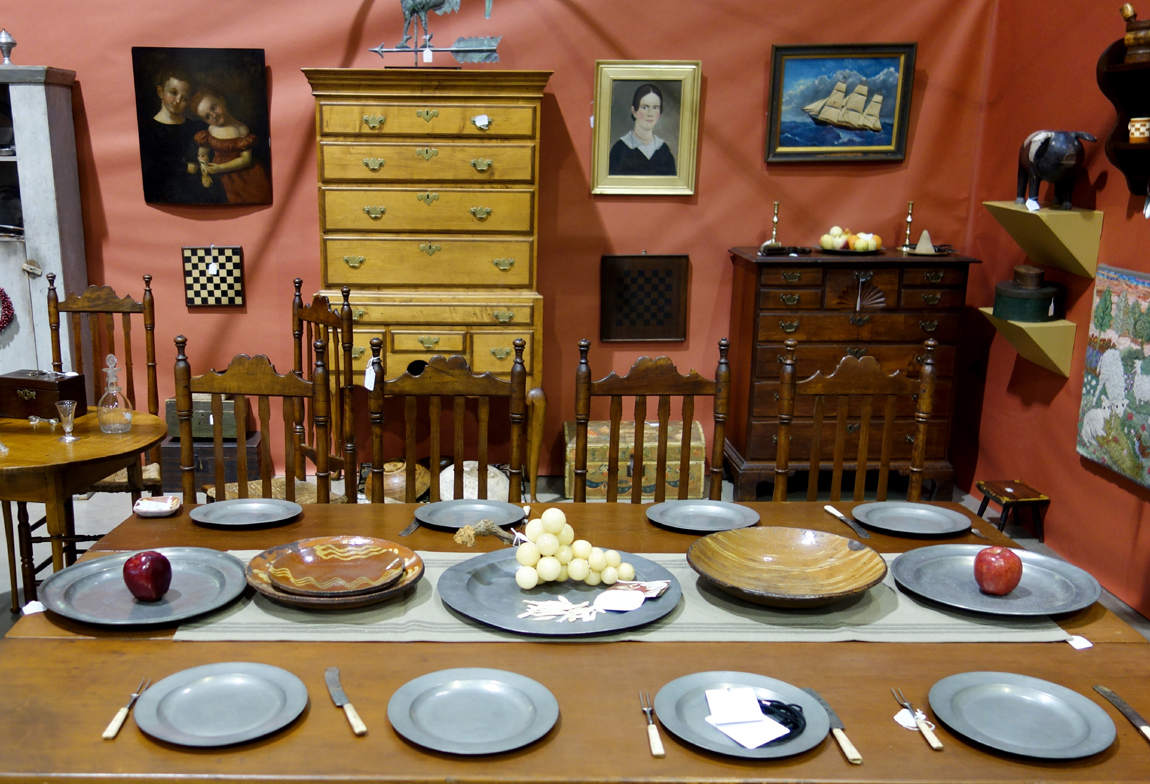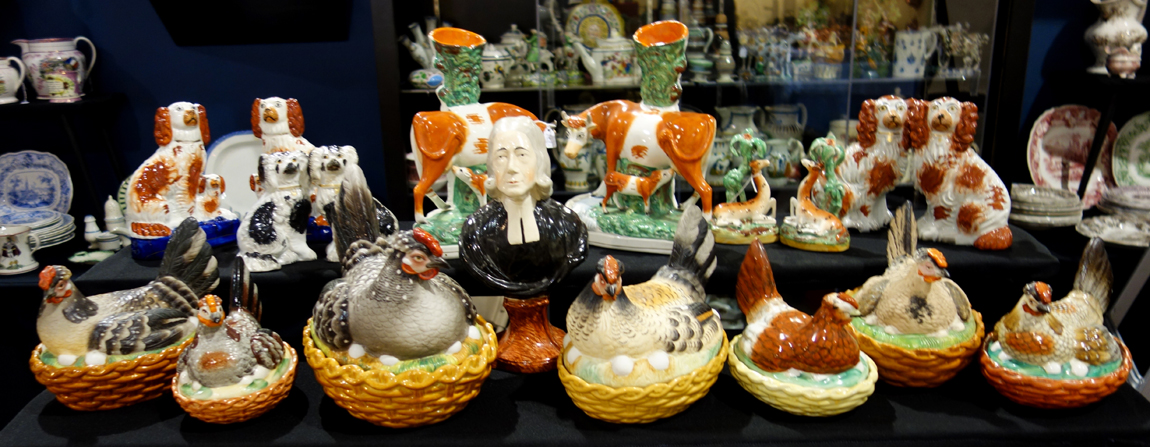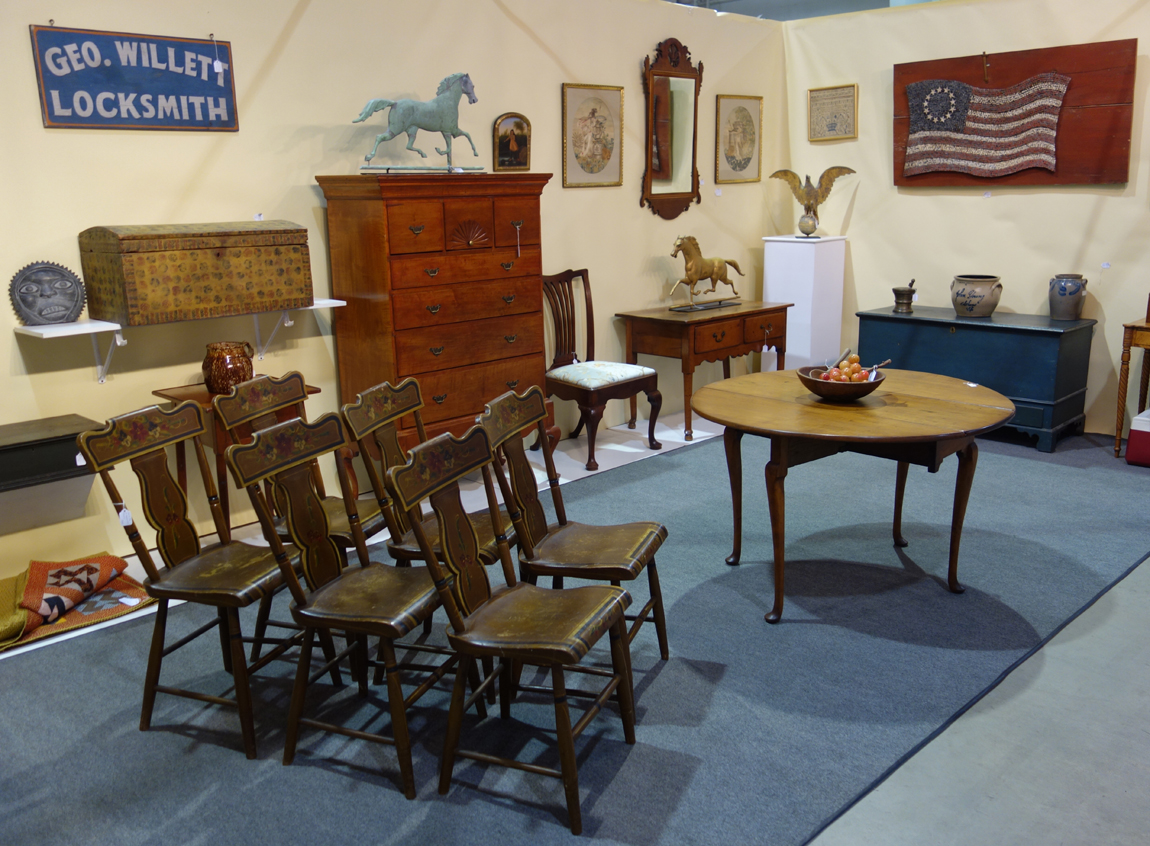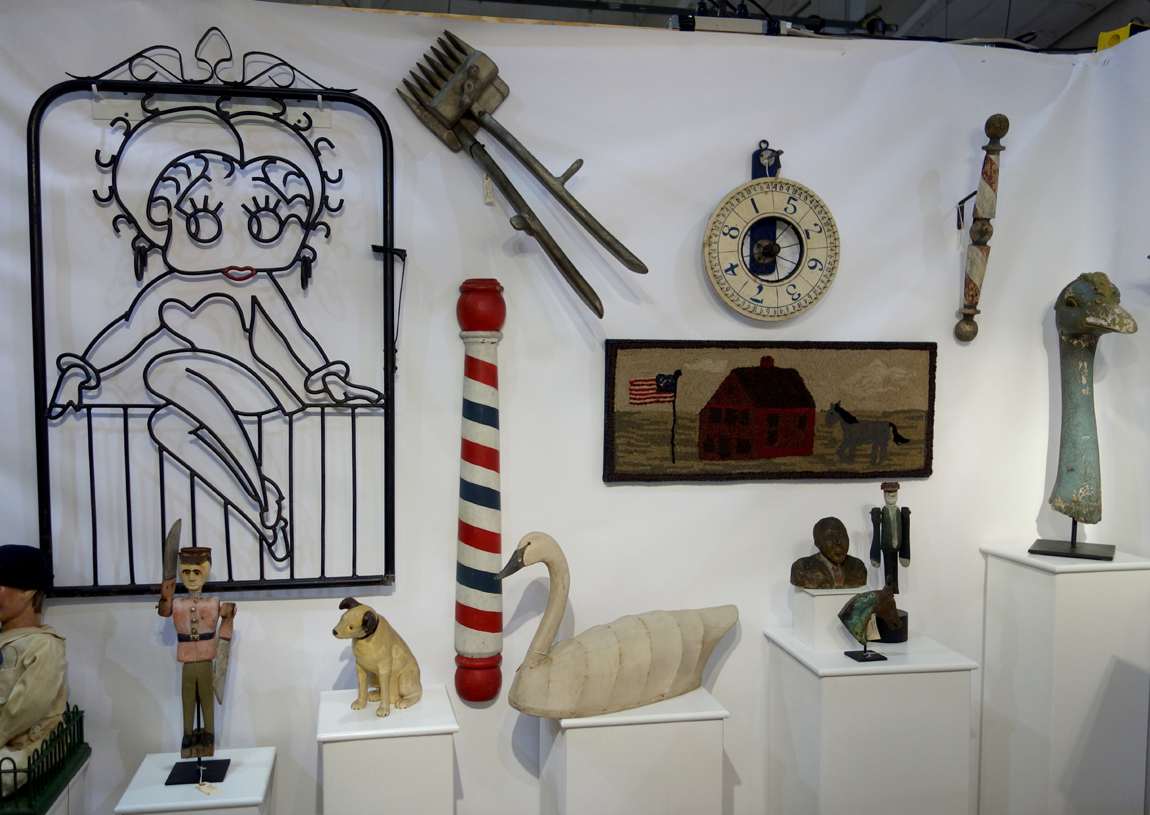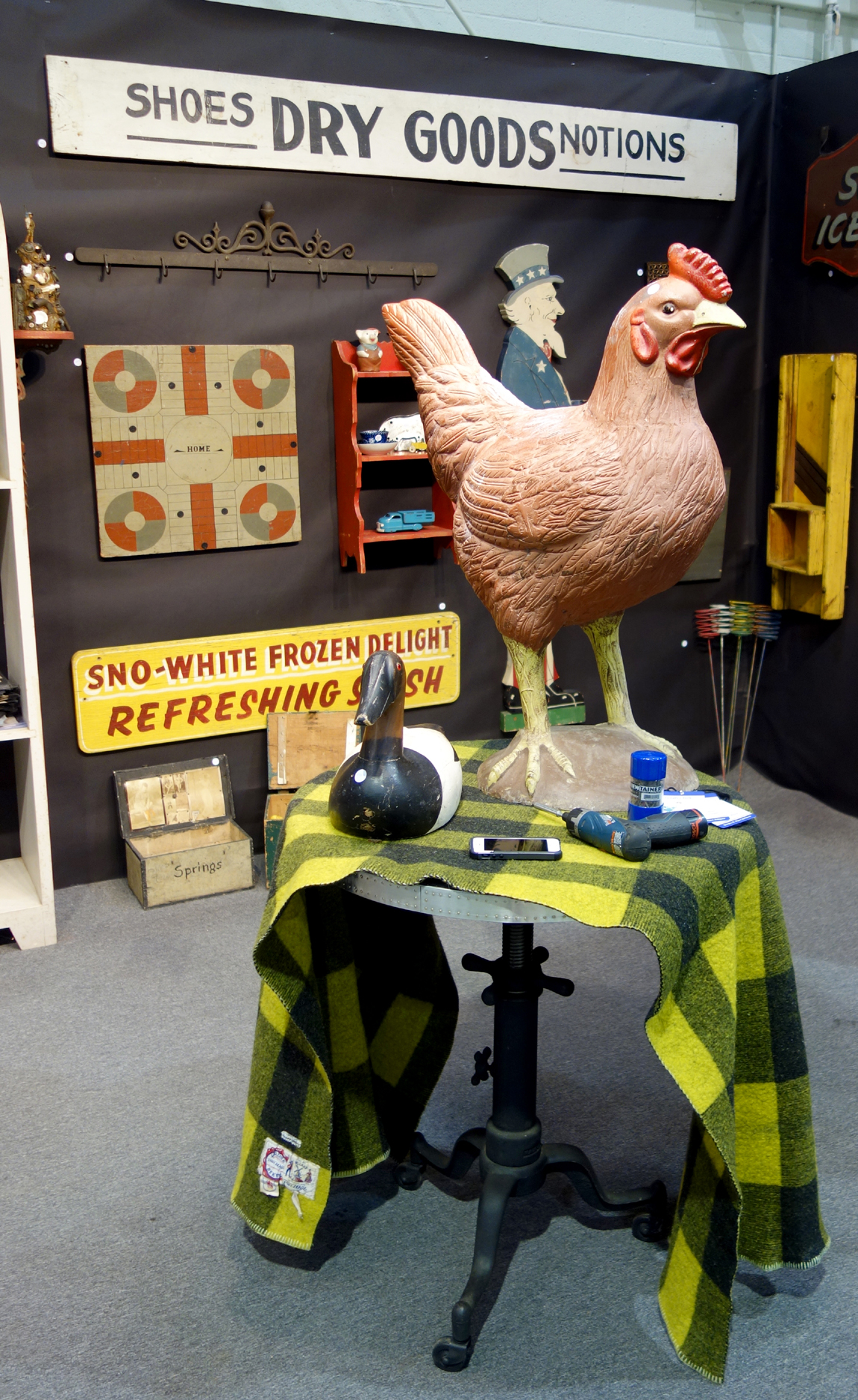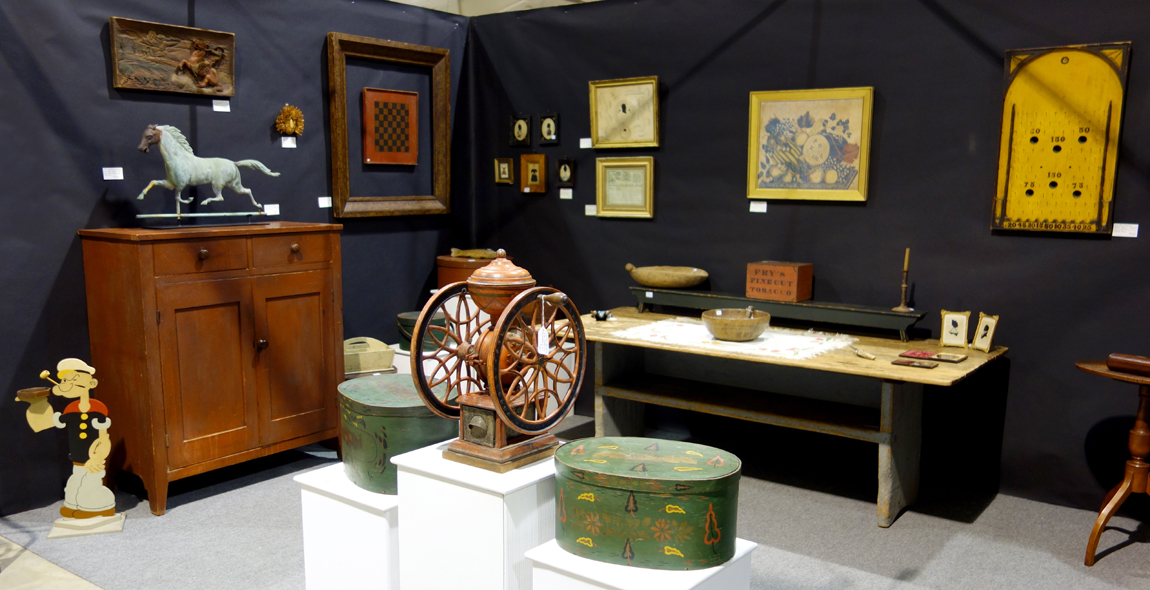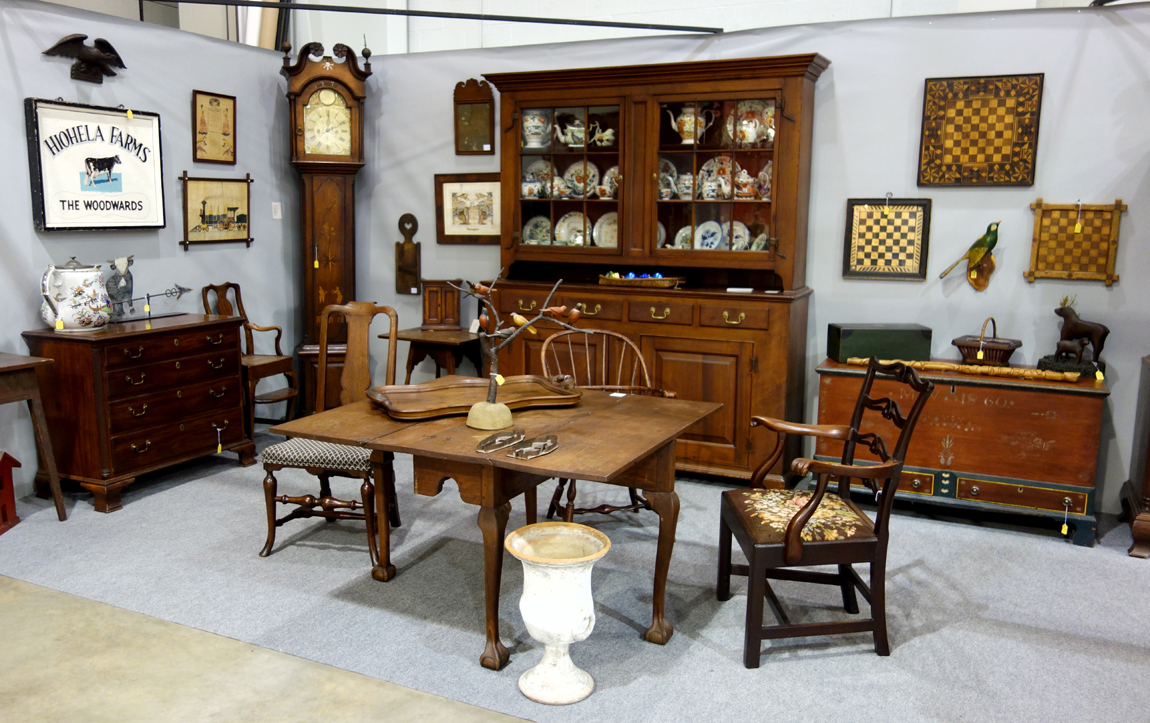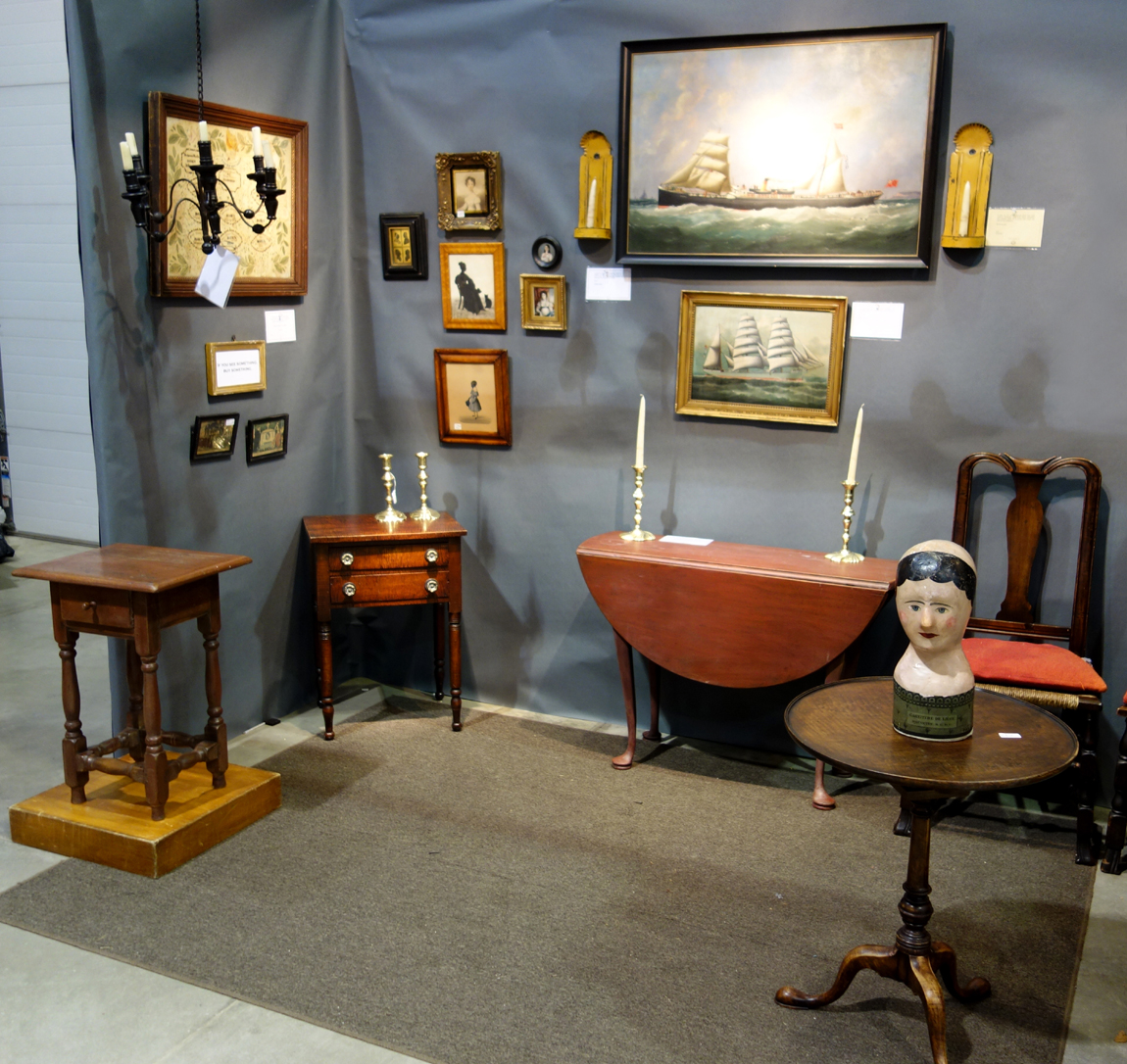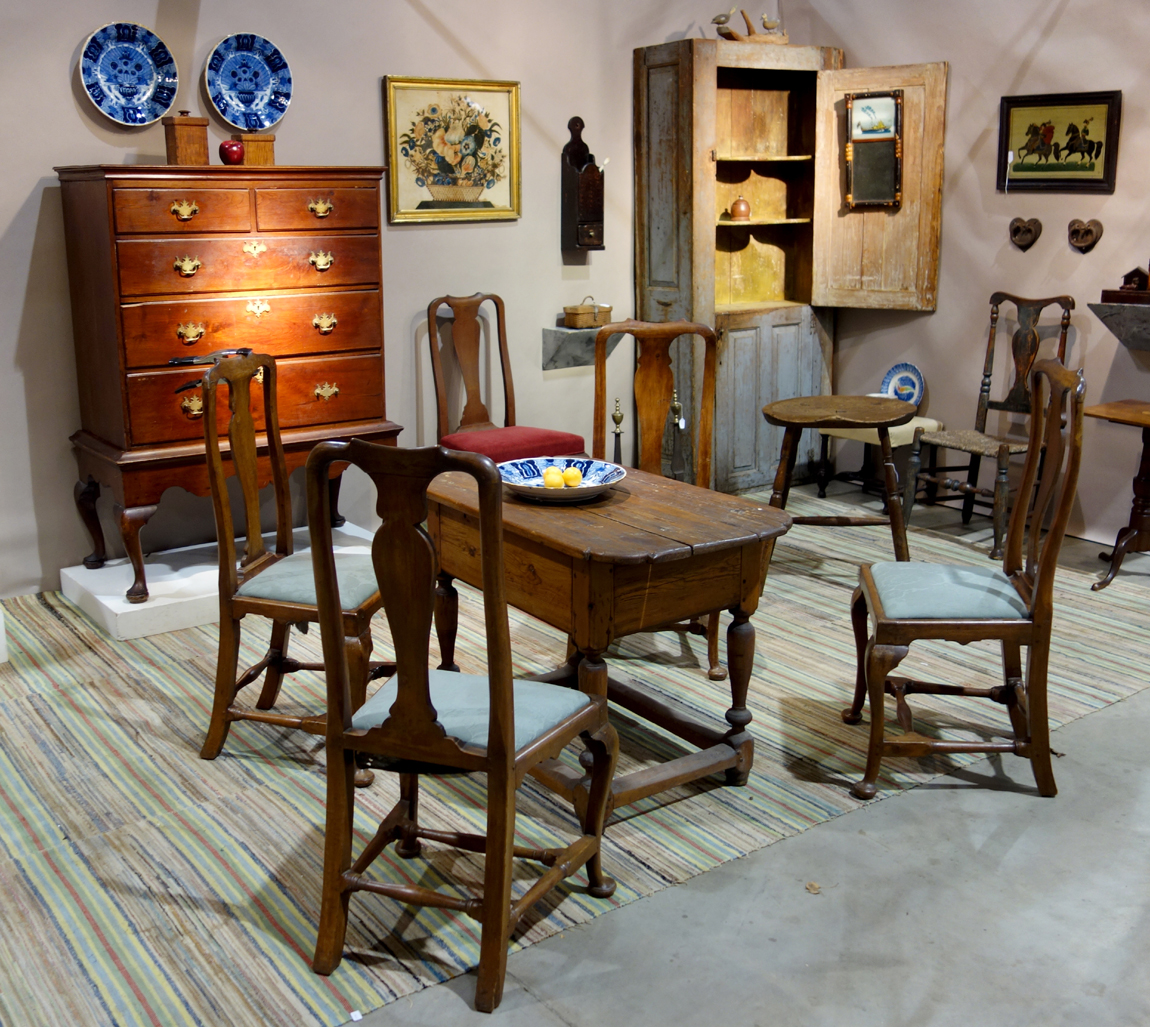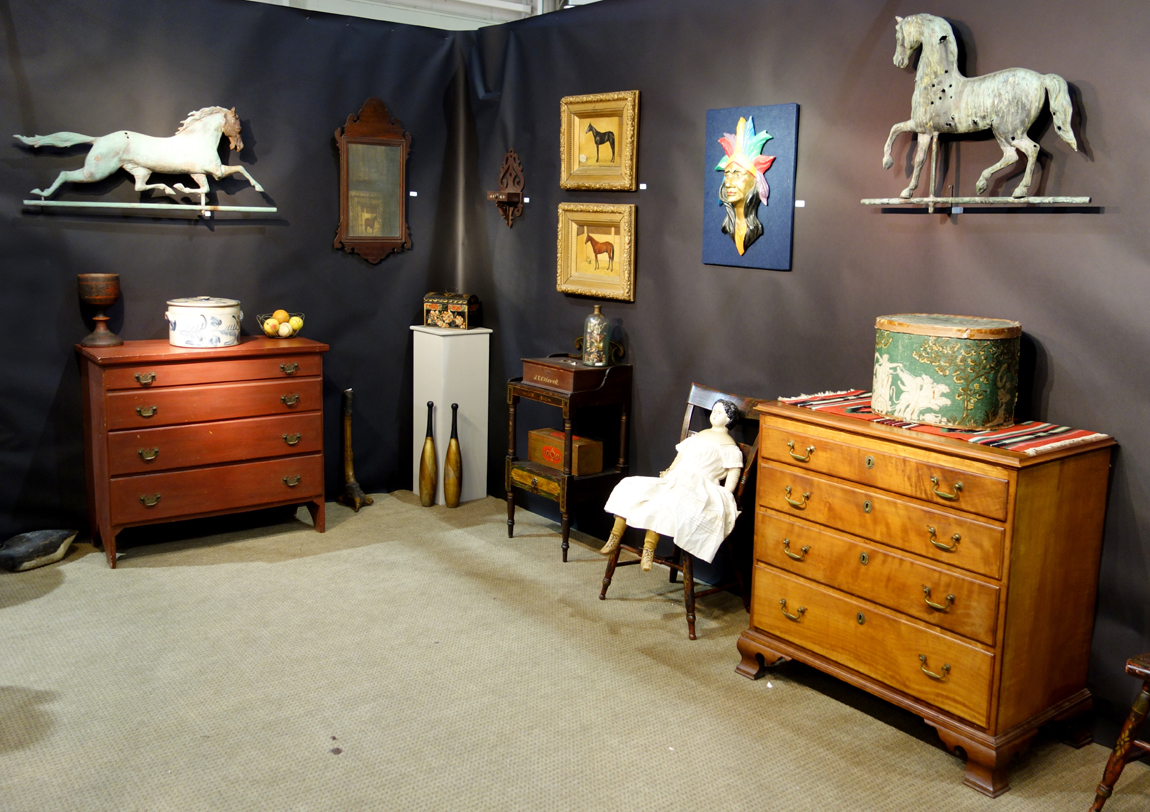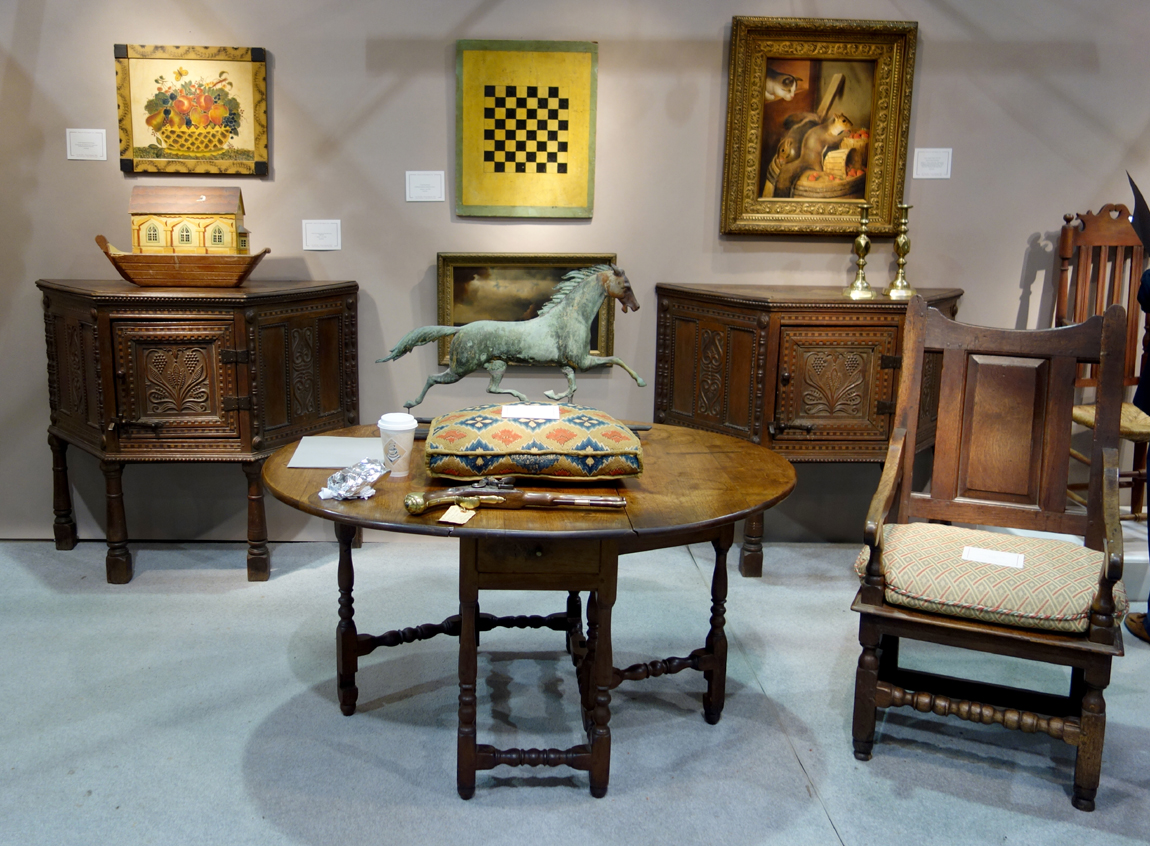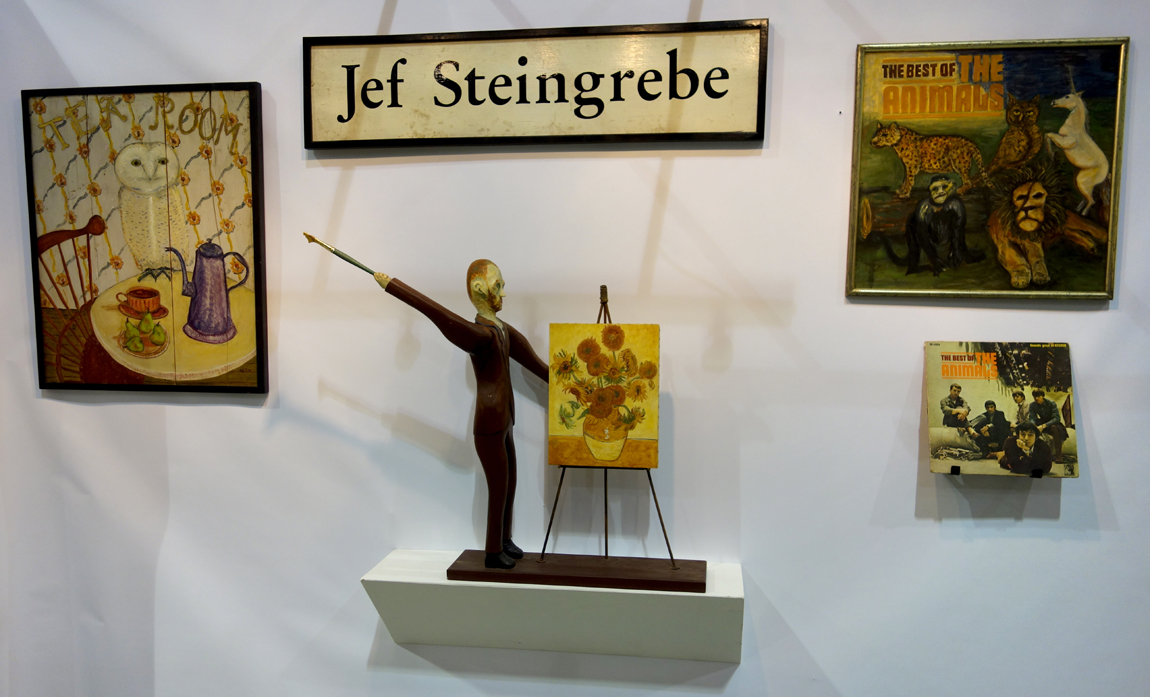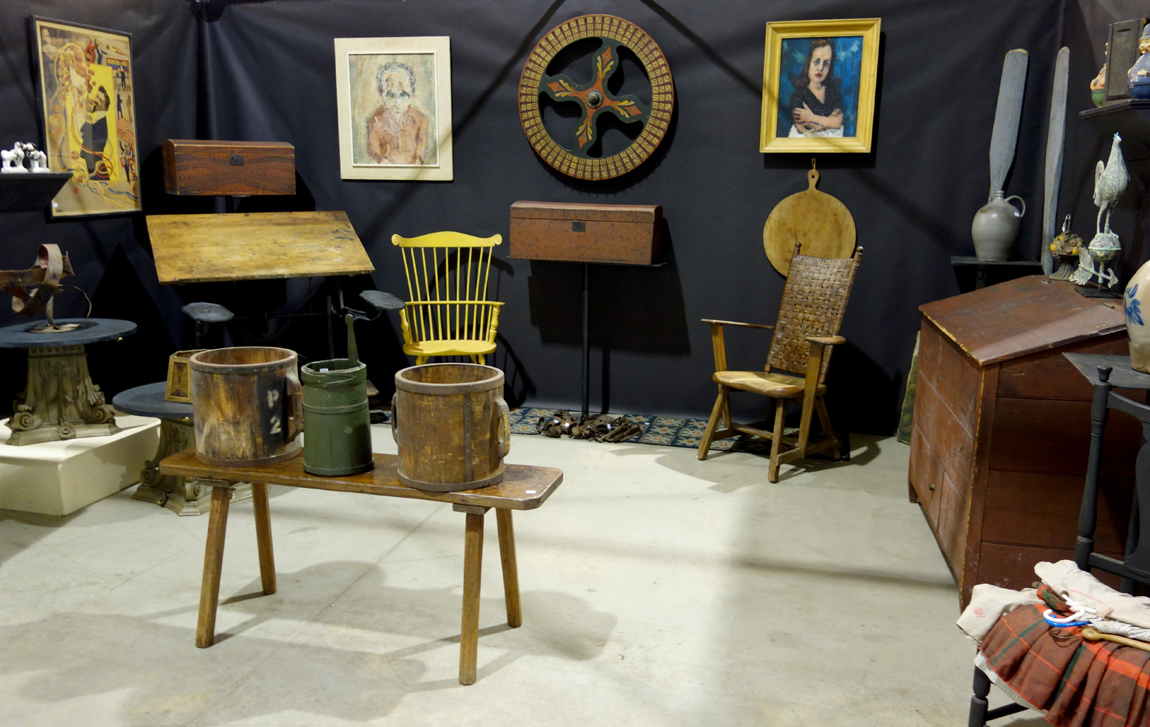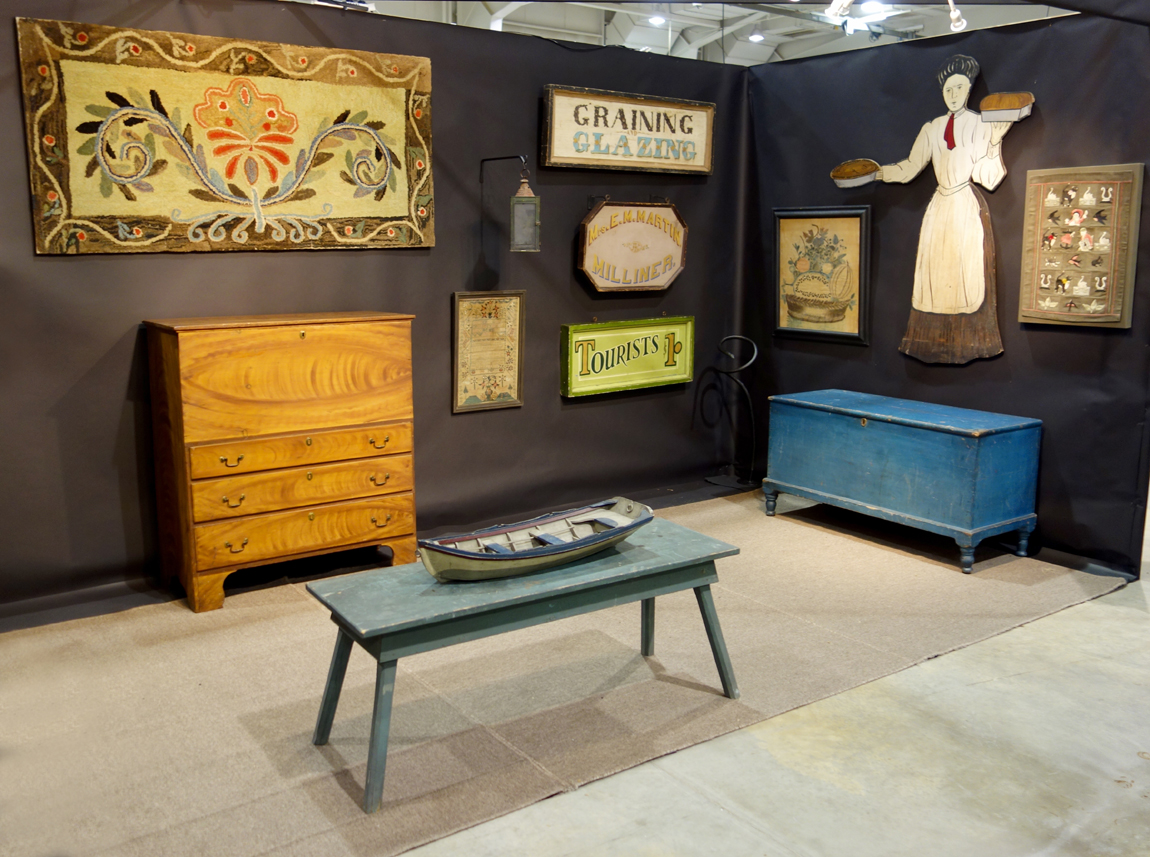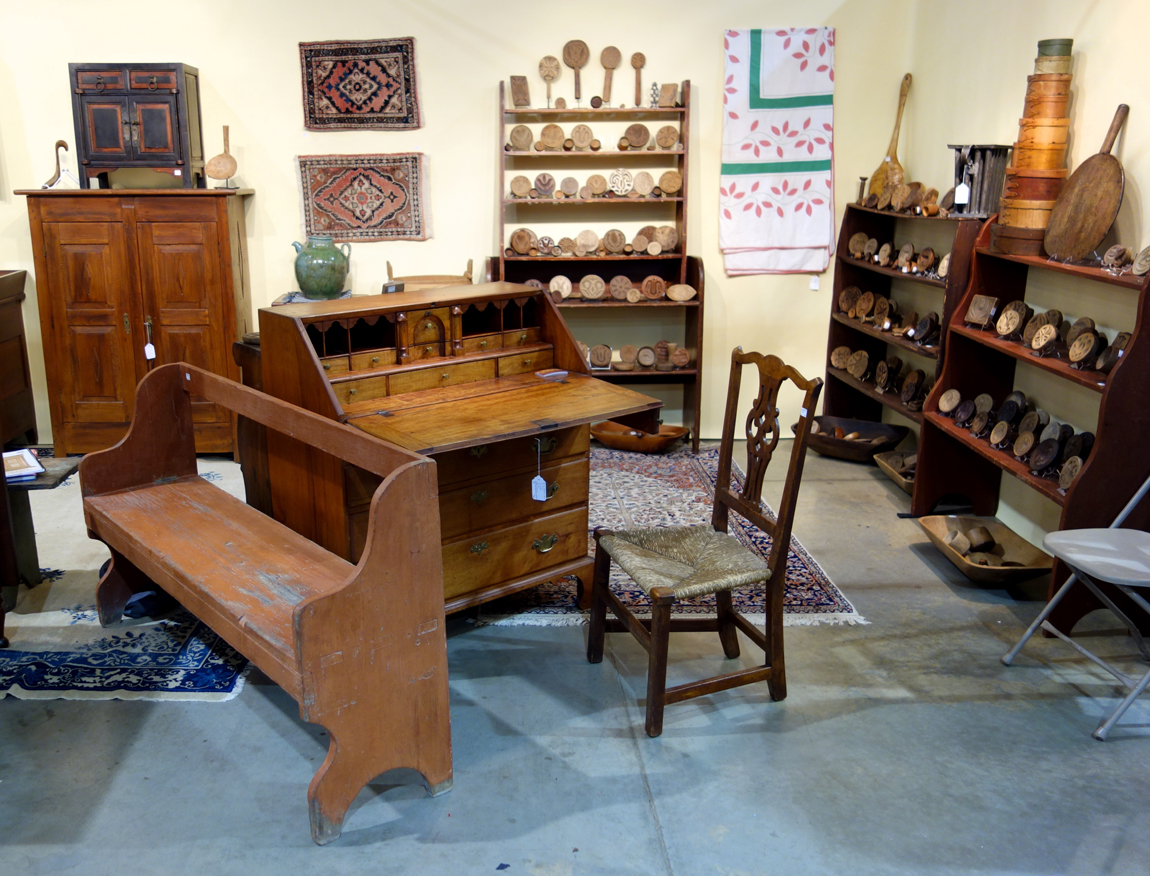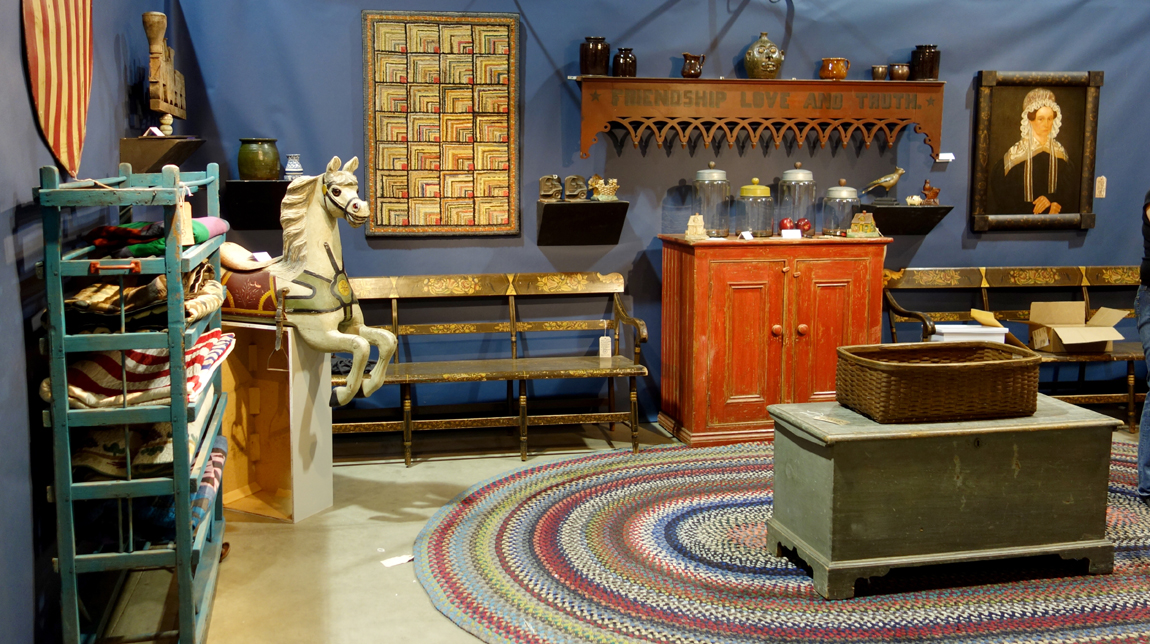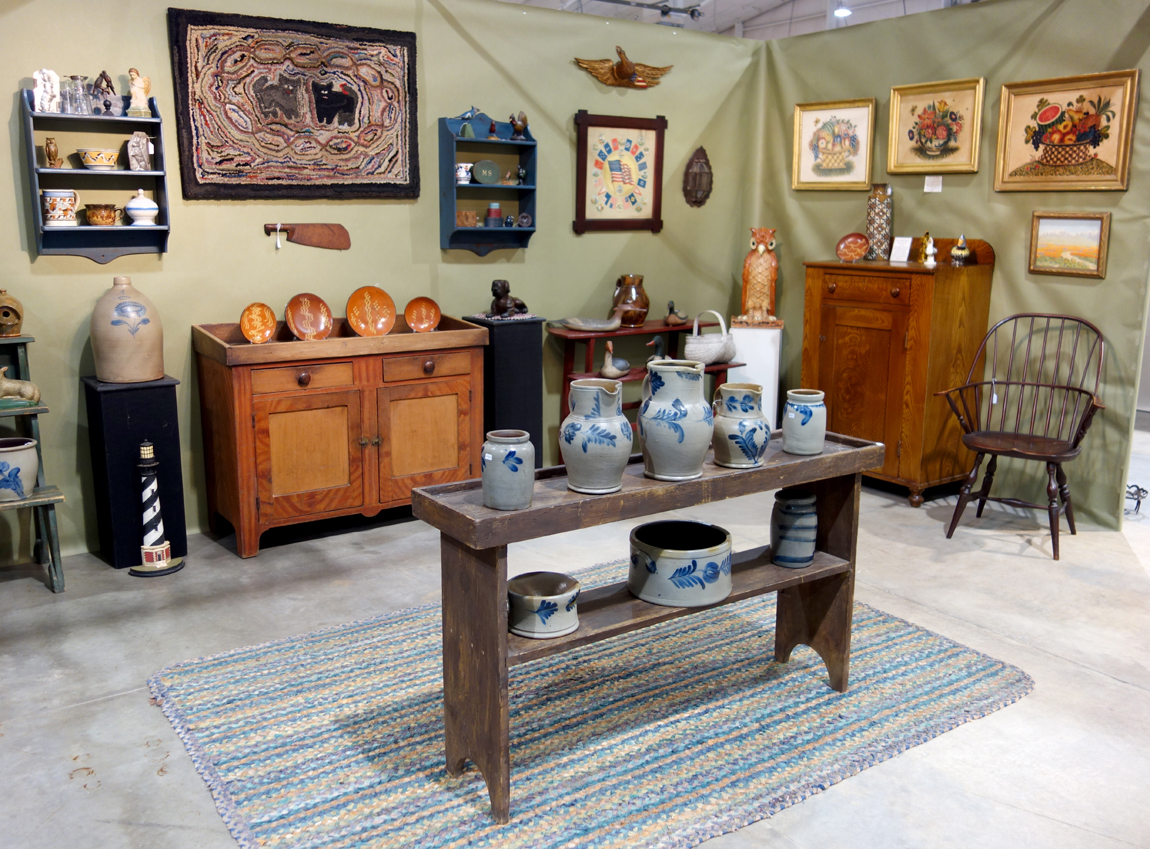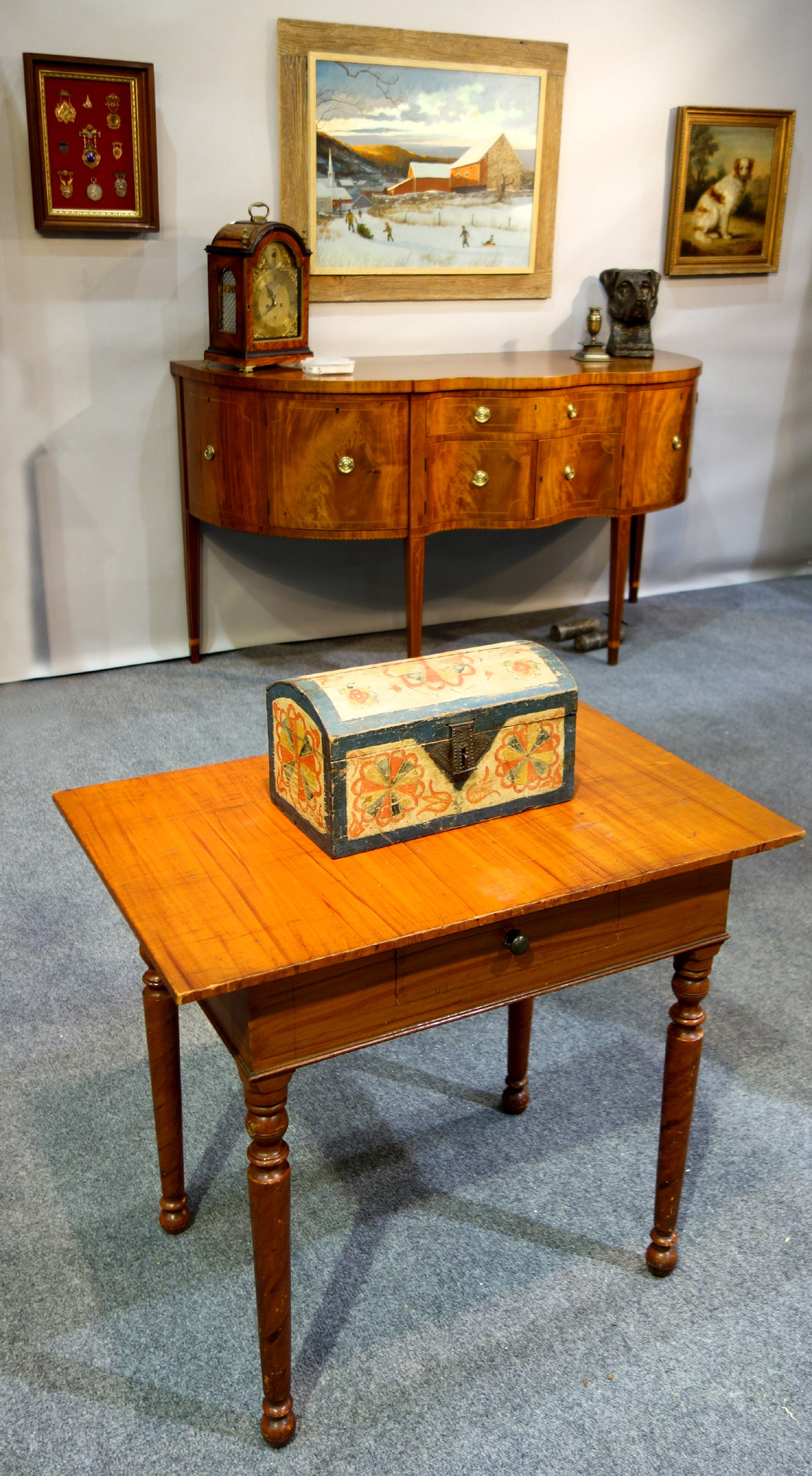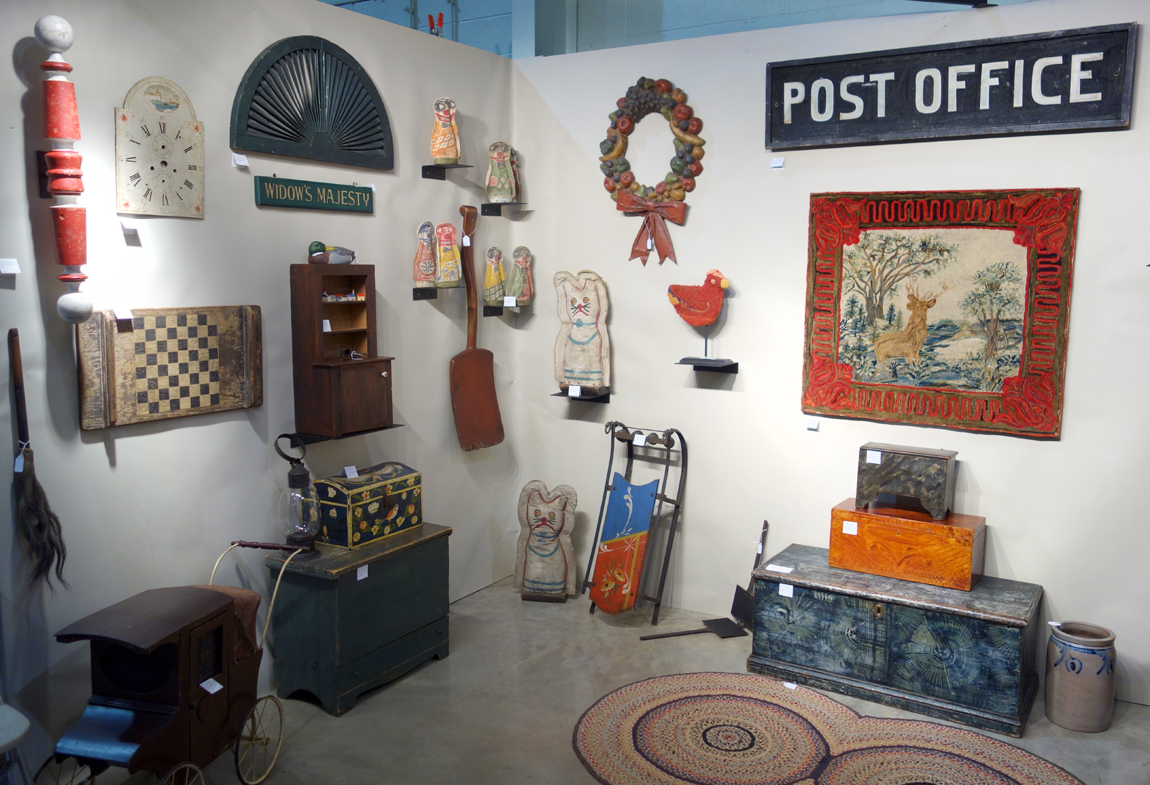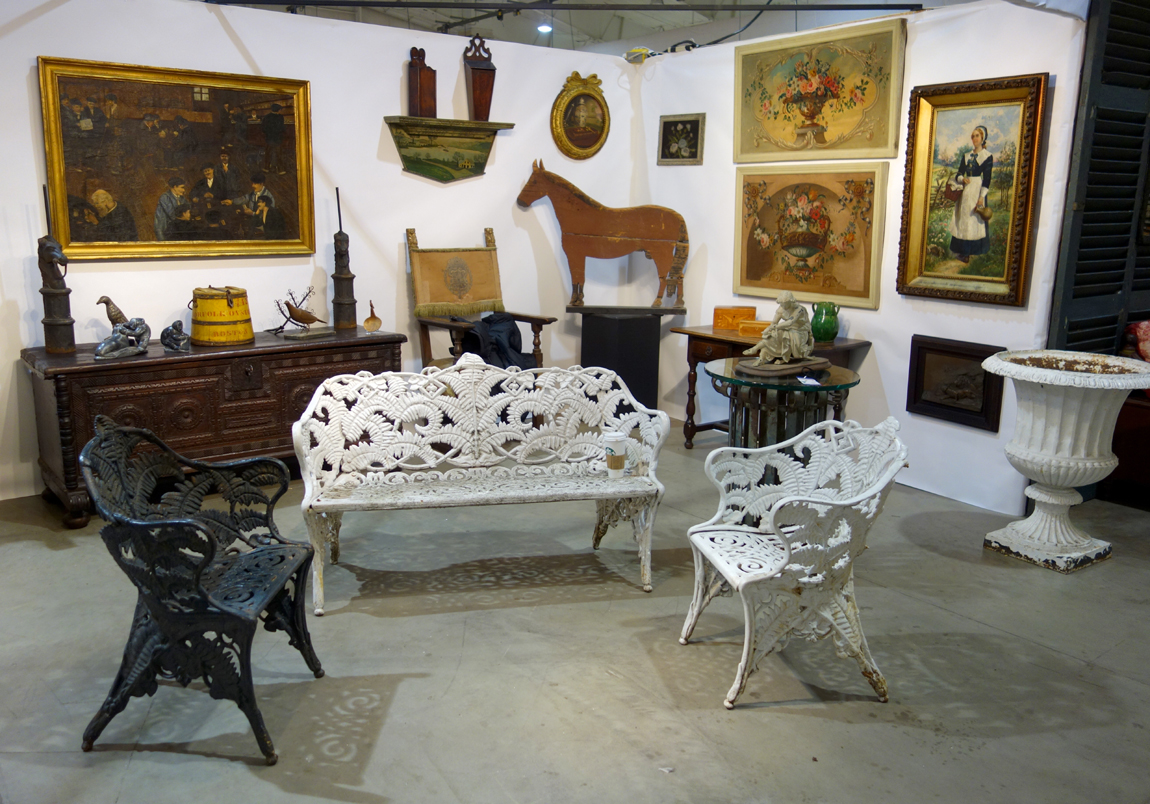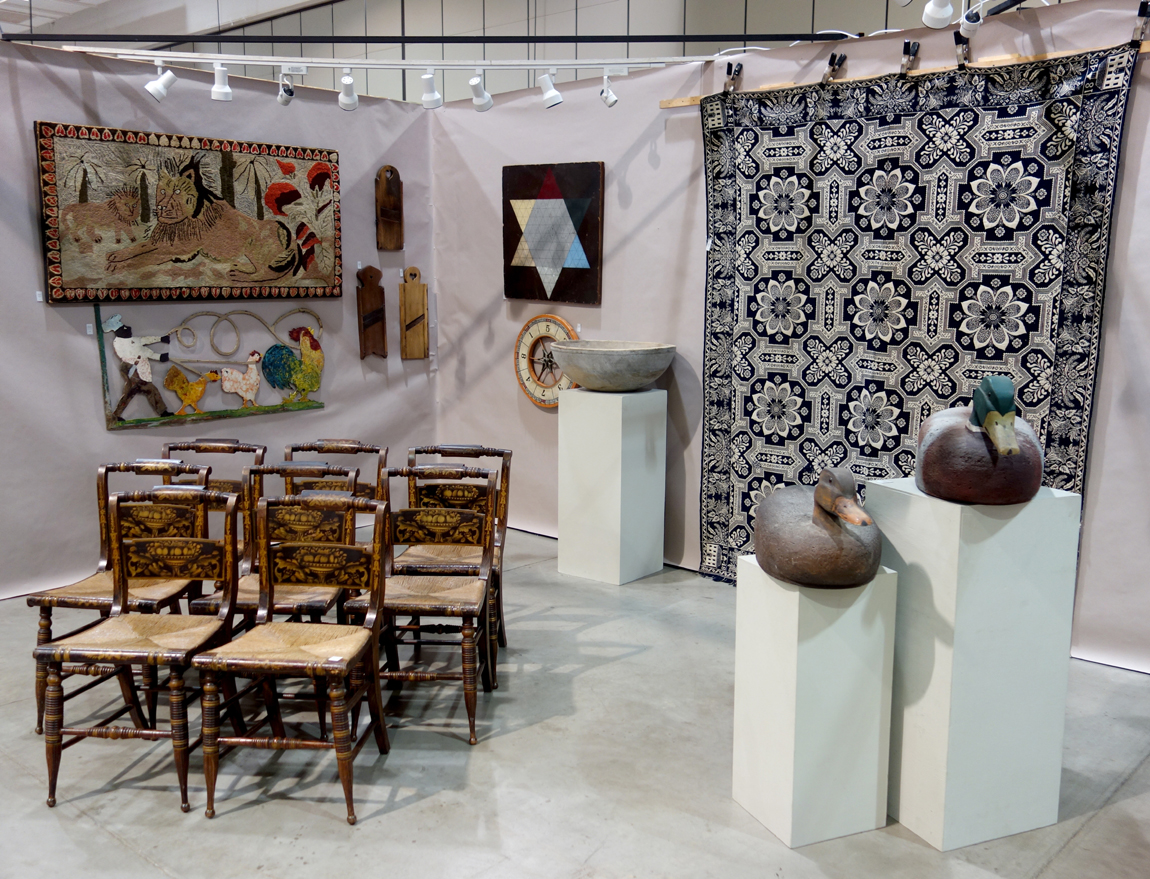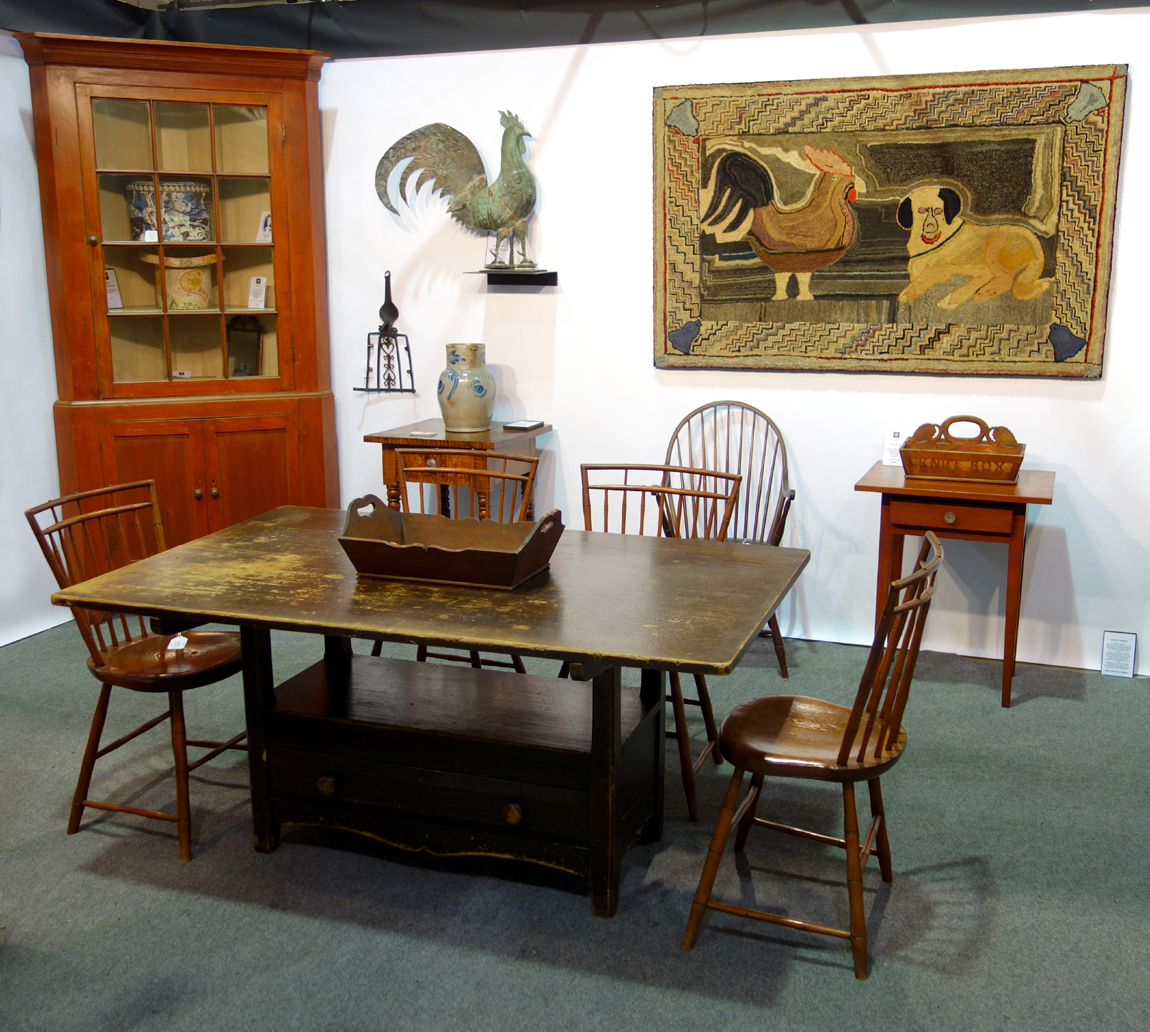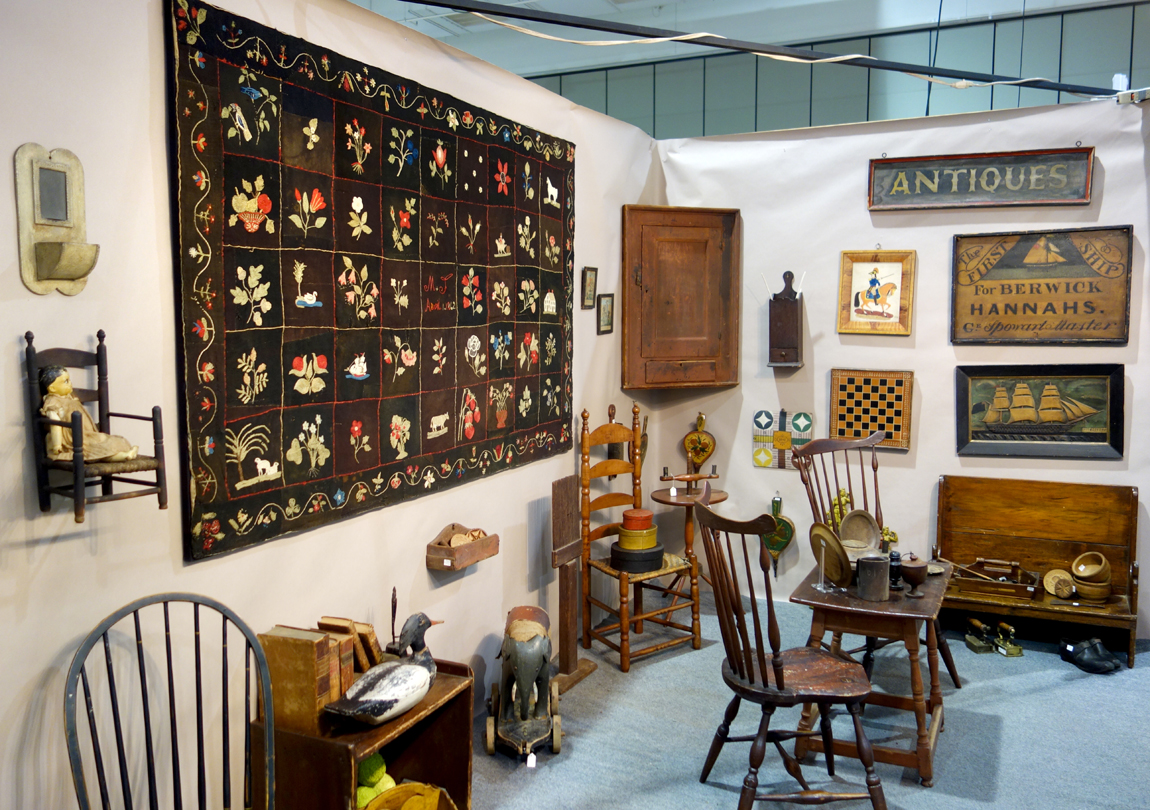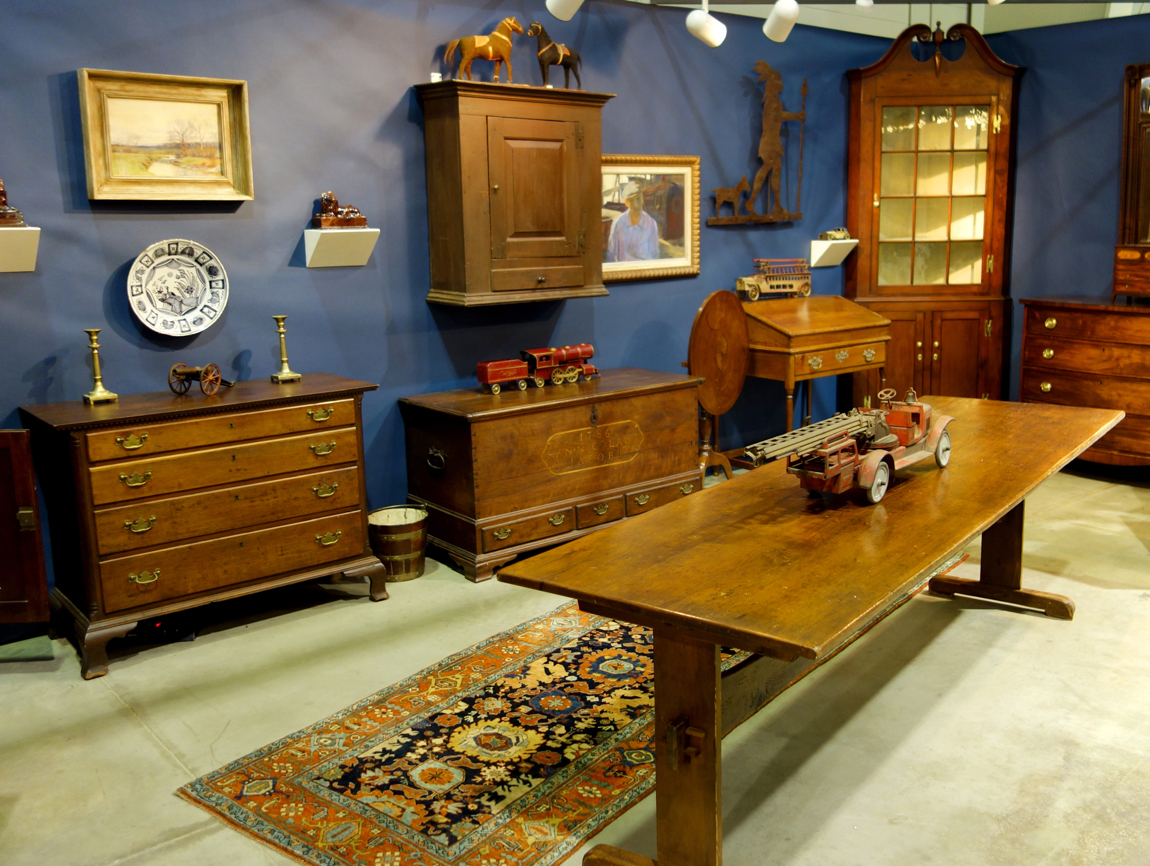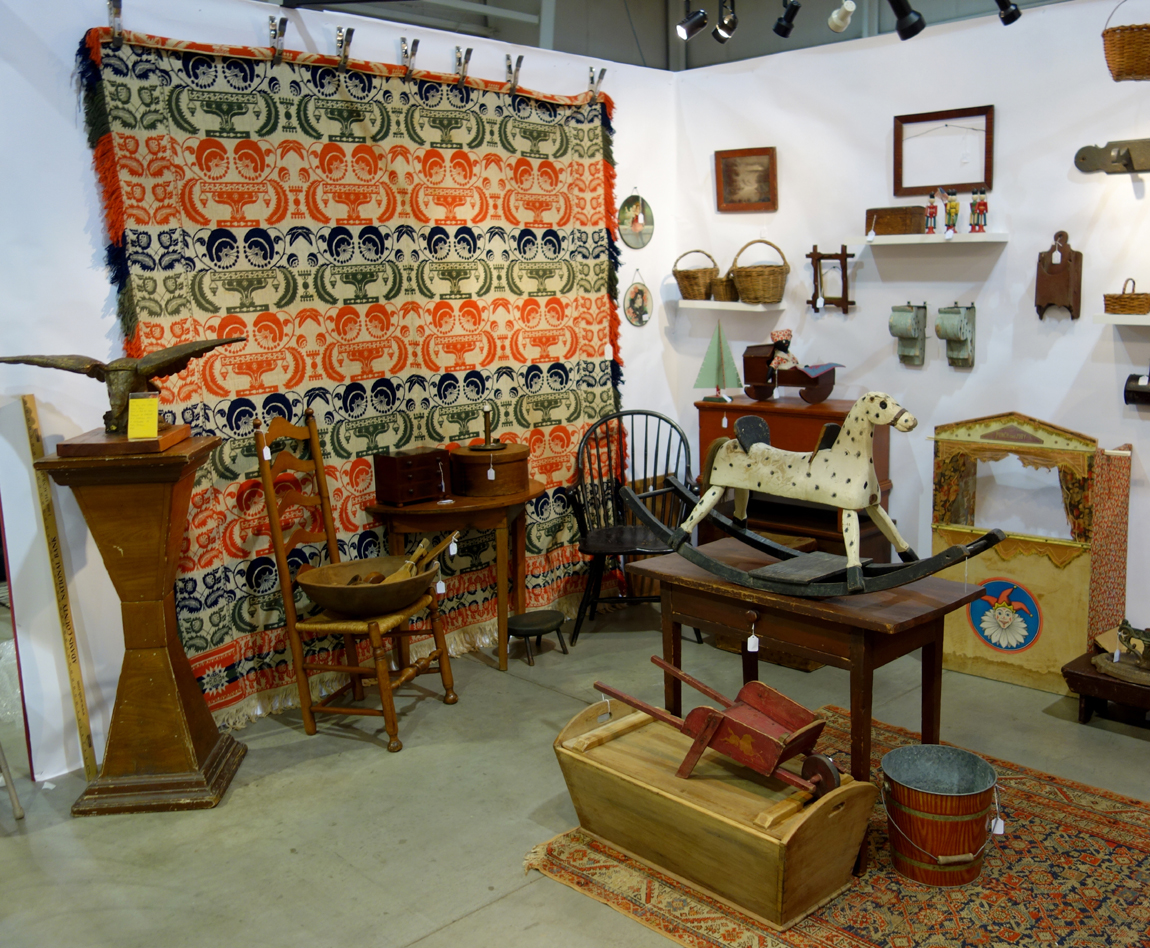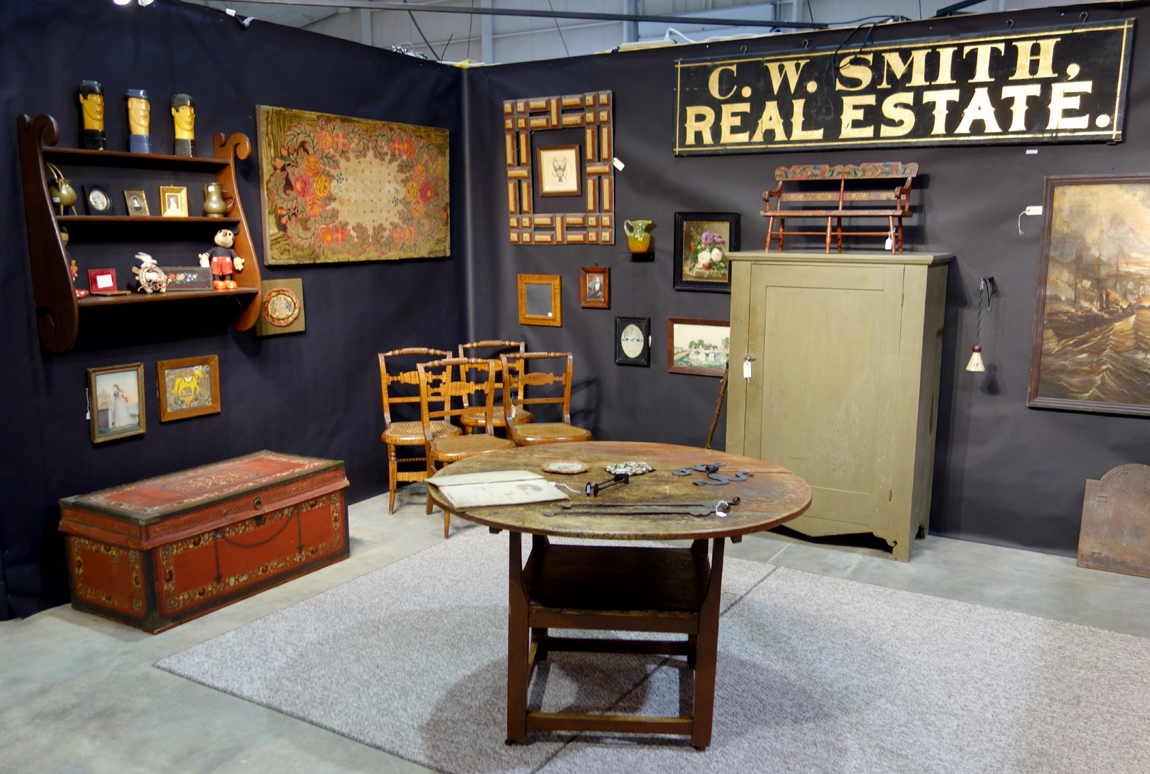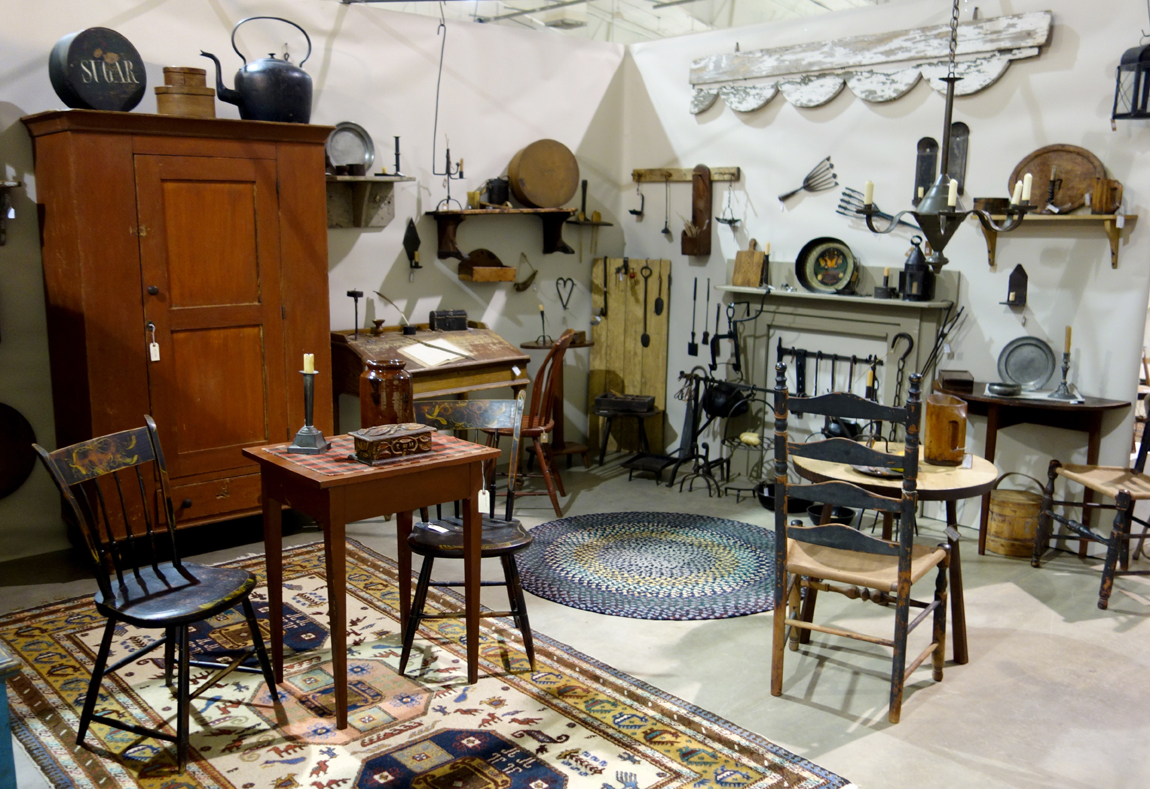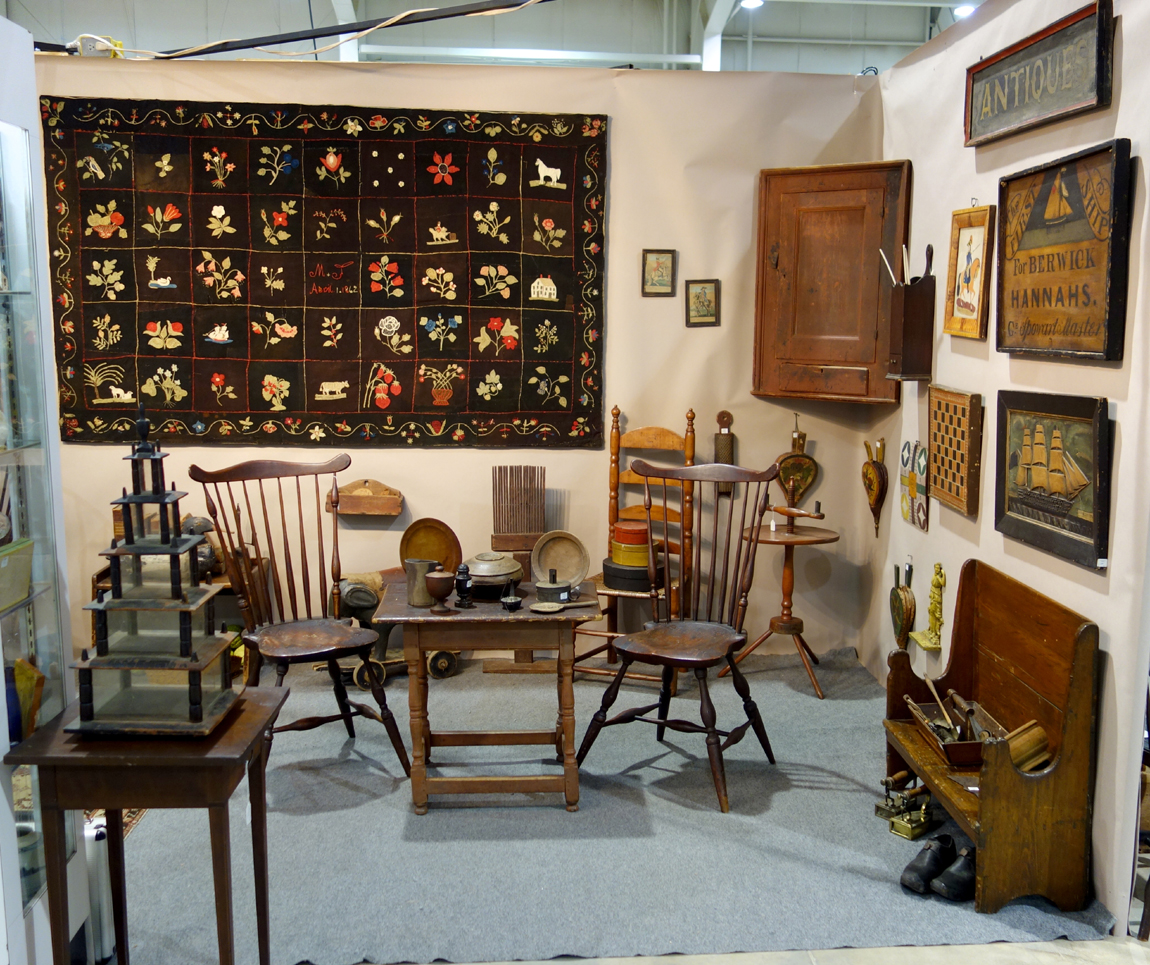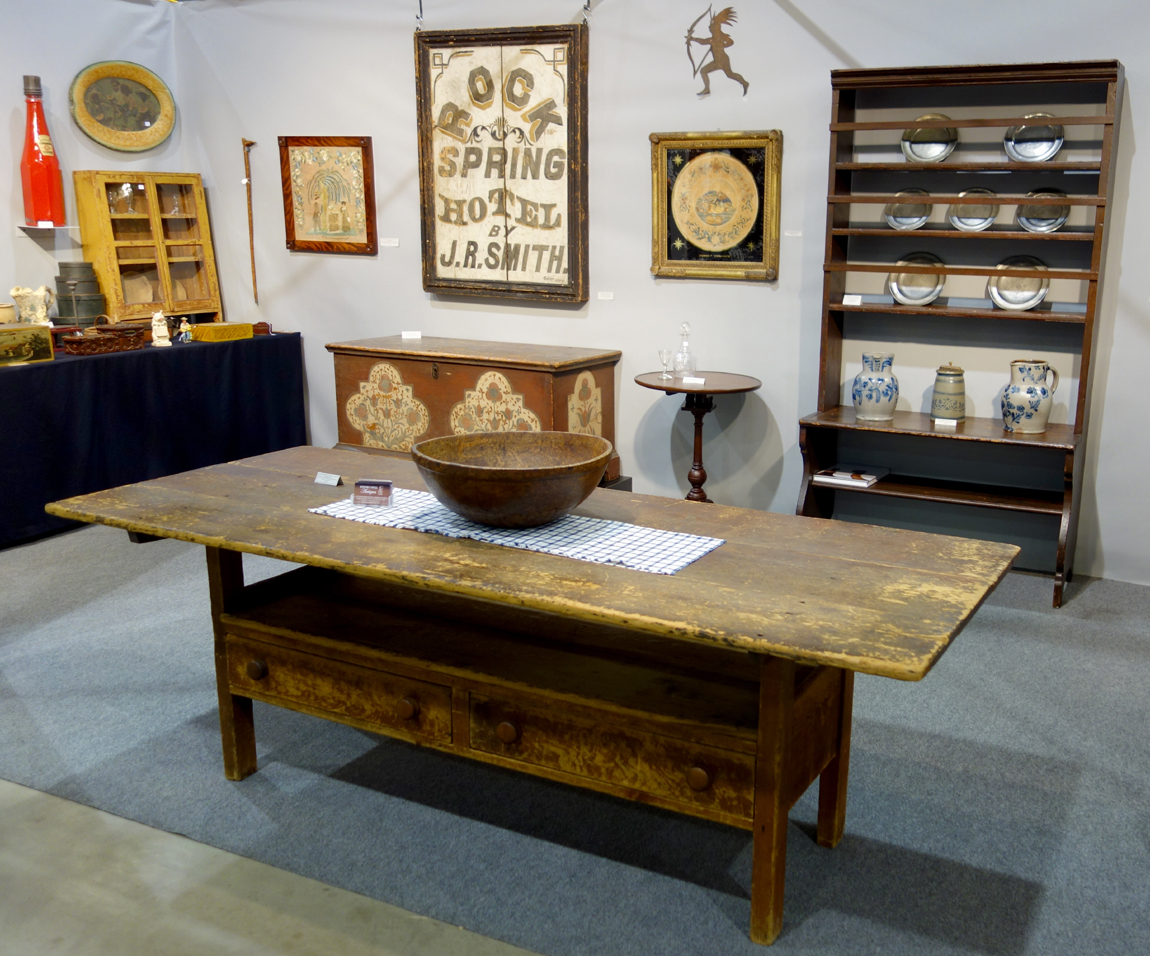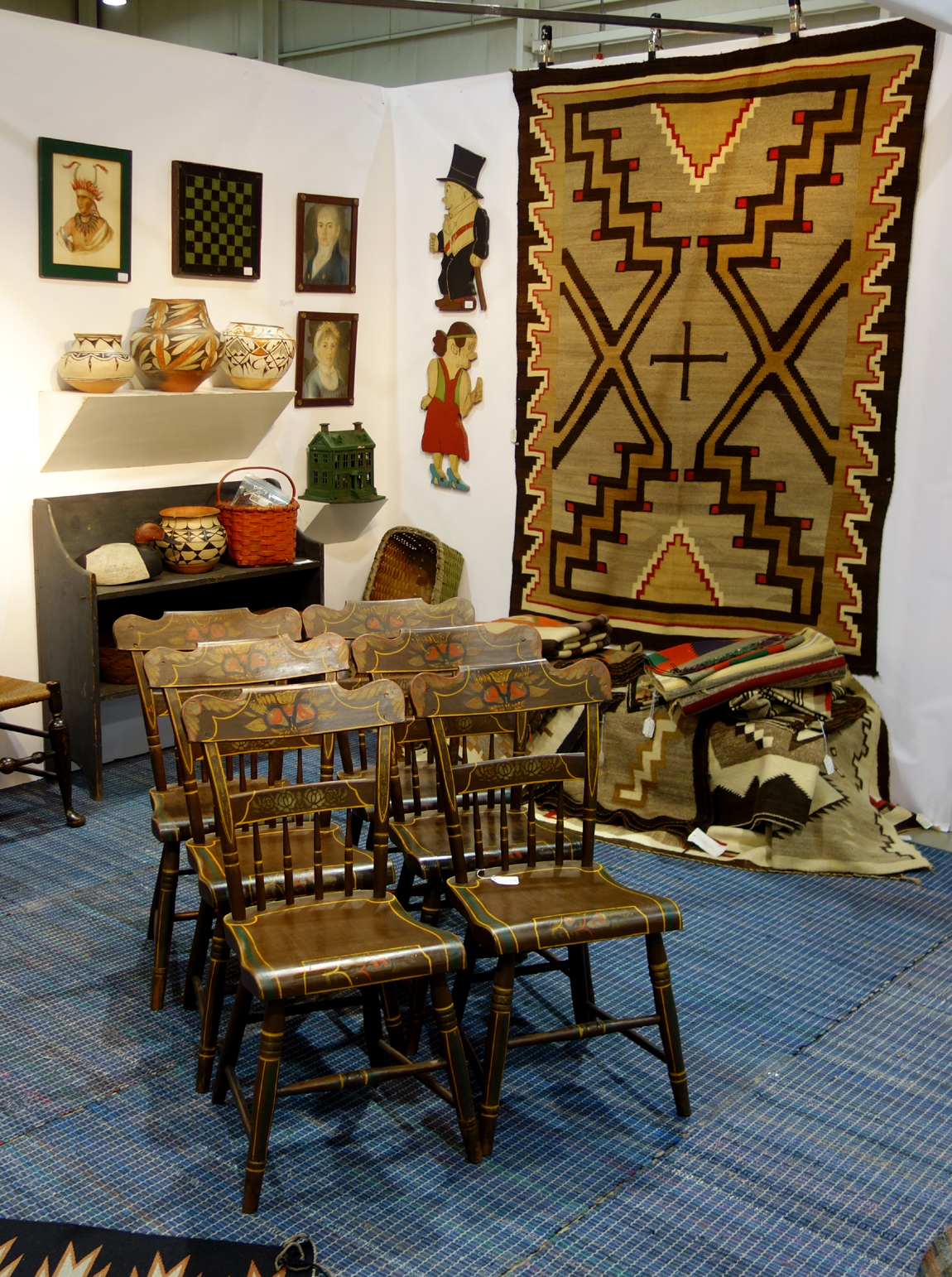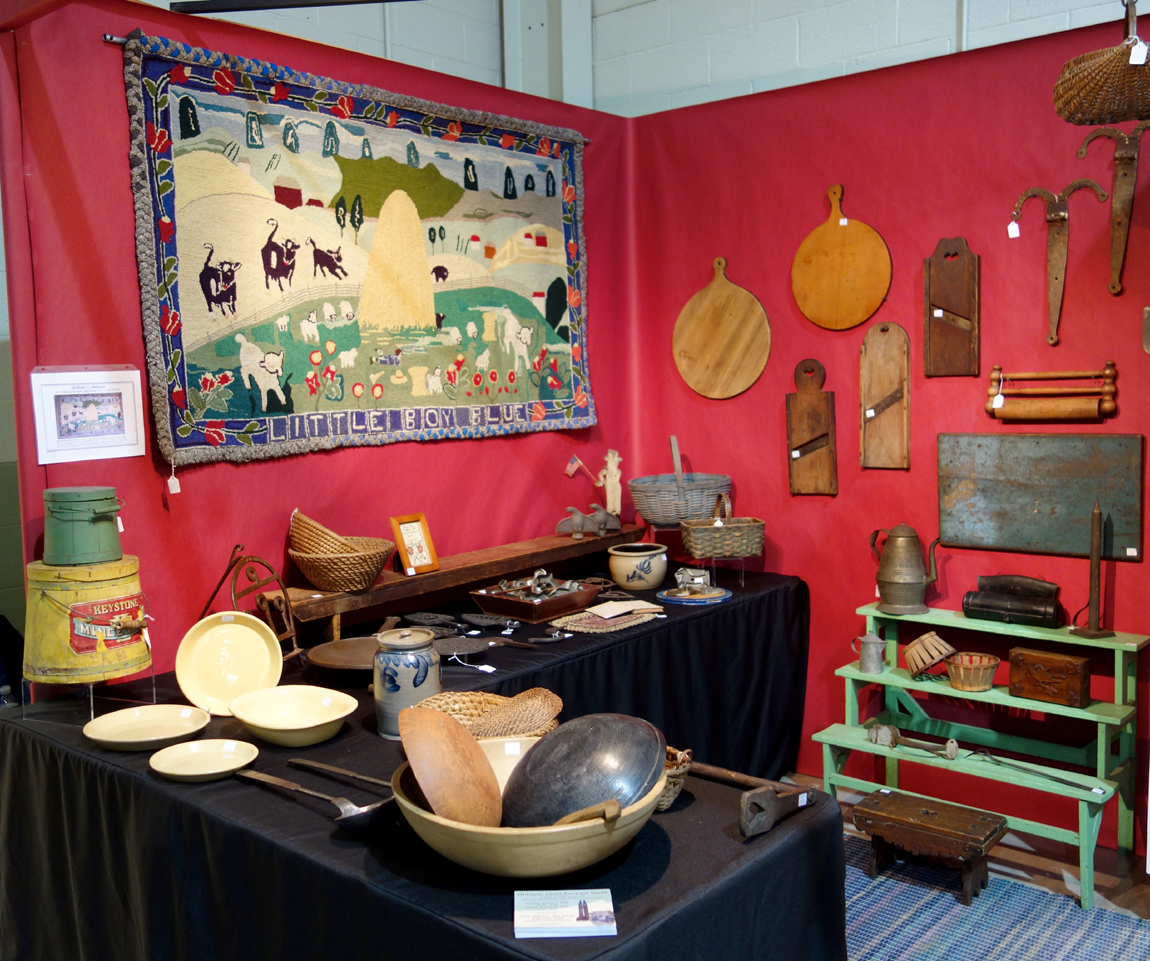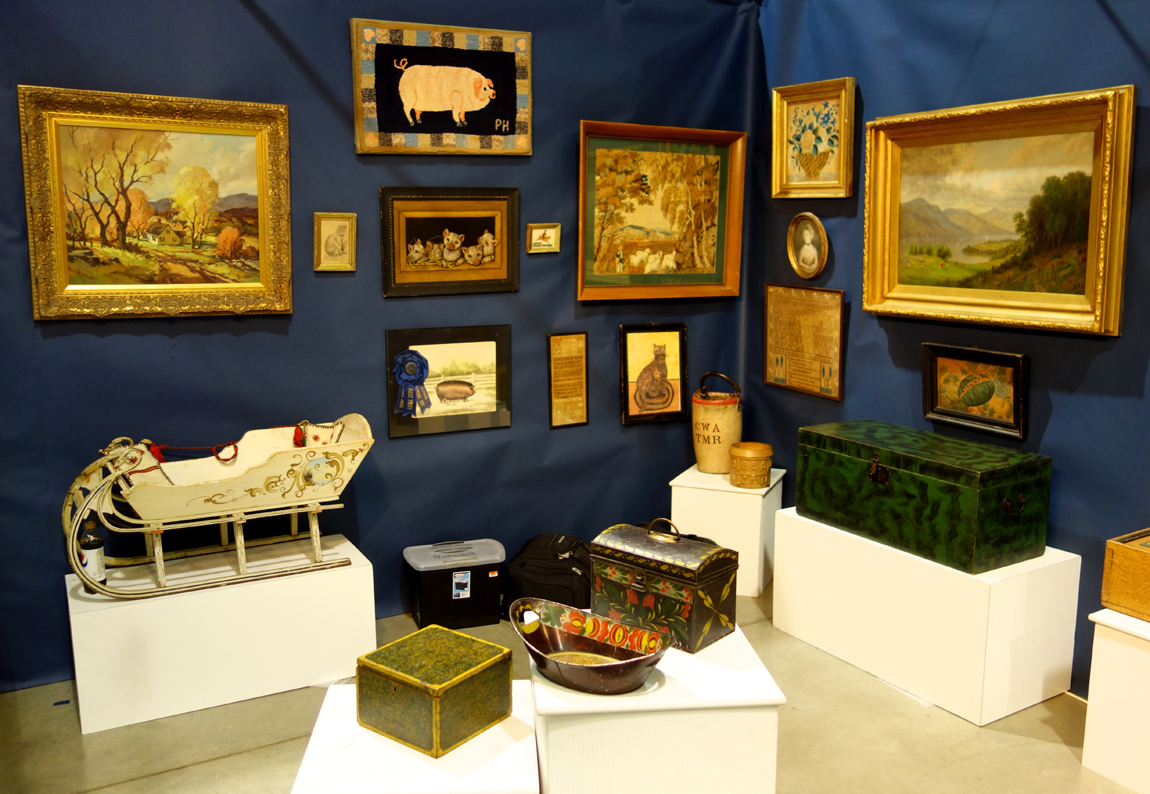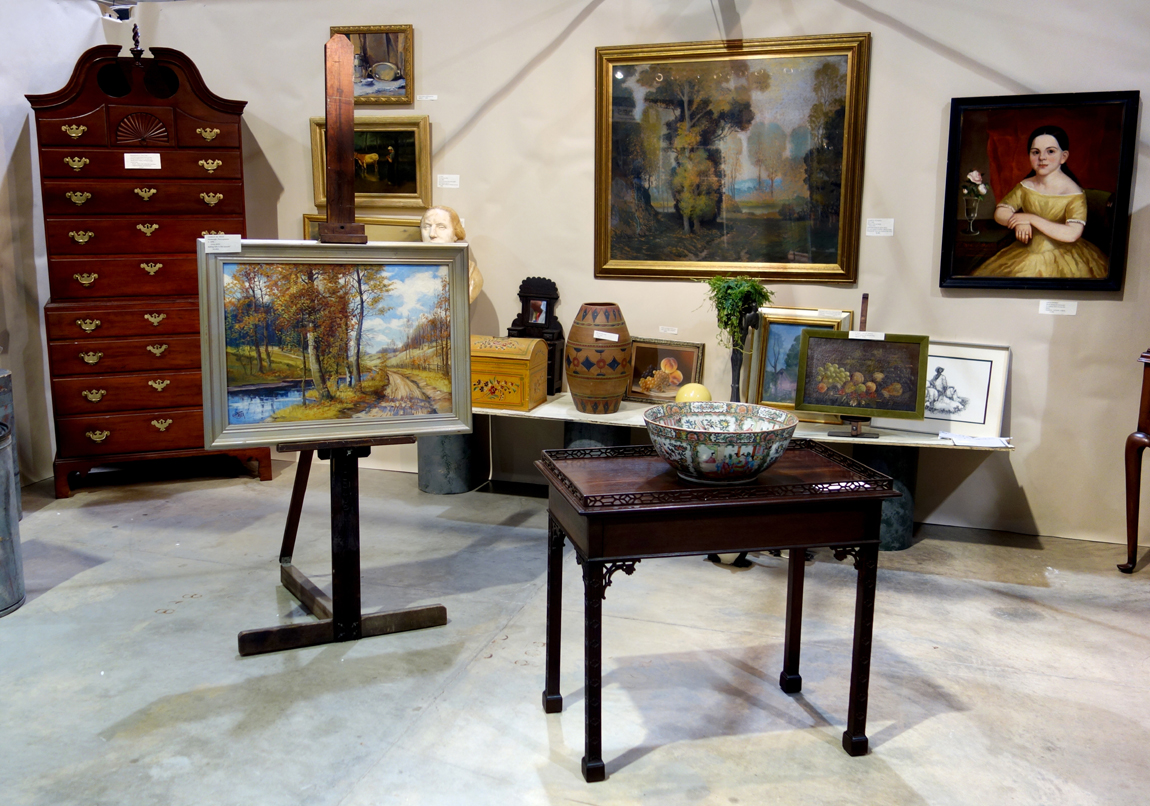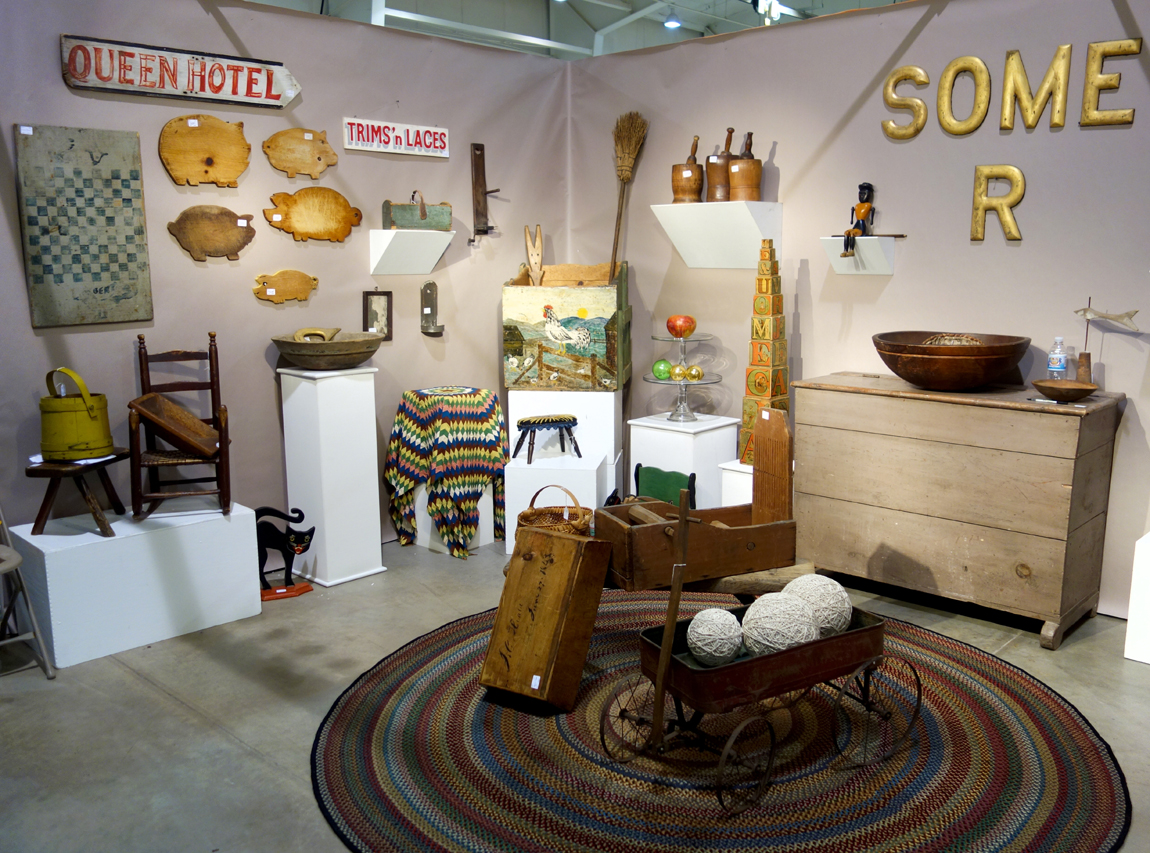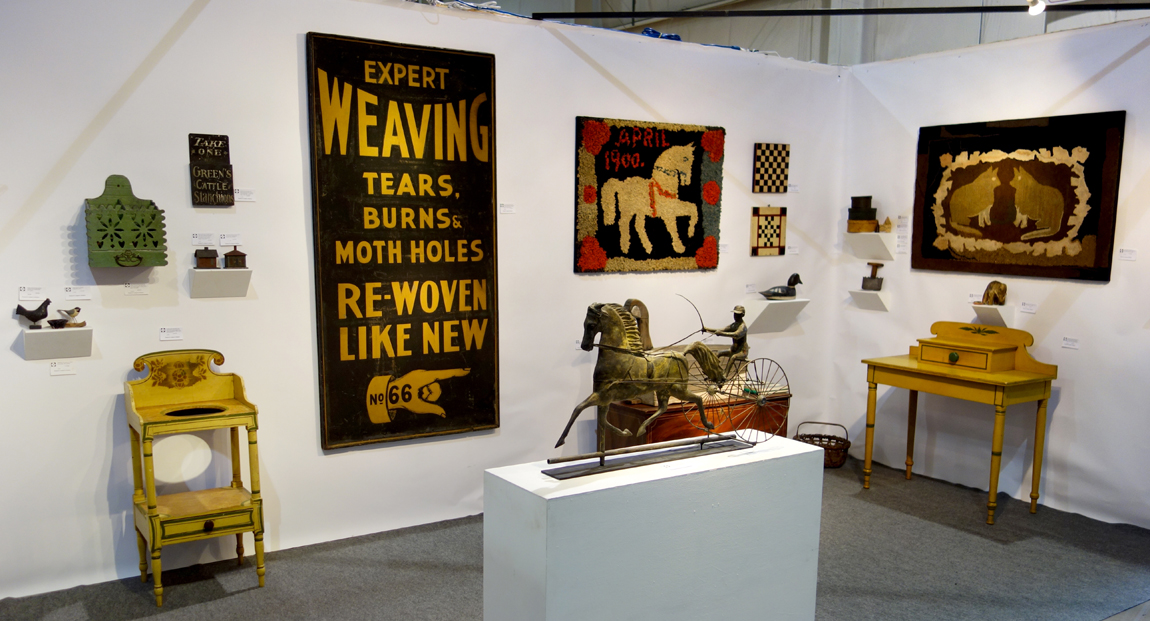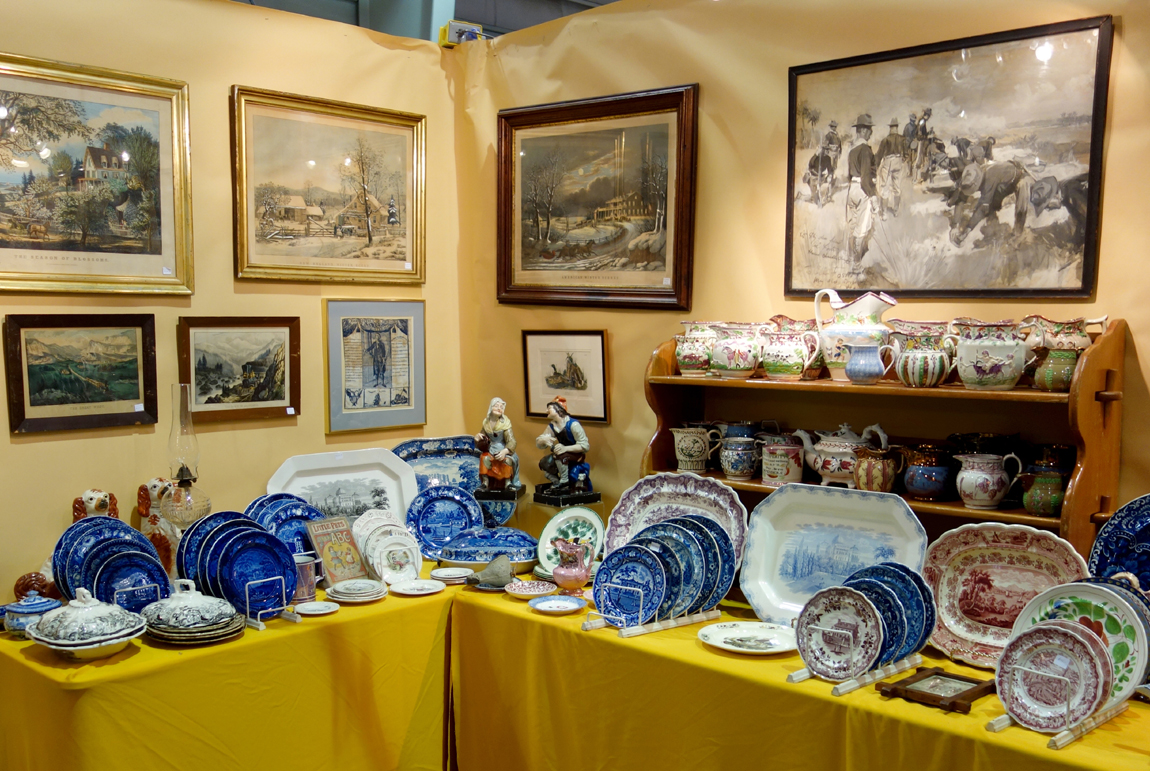Show Moves To Utz Arena For November 13–14 Outing
Review and Photos by R. Scudder Smith
YORK, PENN. — “We had a good gate on Friday, some good buyers on Saturday, and overall the show ended up on a good note, exceeding the numbers of the May show,” Bob Bockius, owner and manager of the show, said. This fall, due to a conflict in the fairground’s schedule, the Greater York Antiques Show moved to new quarters on the fairgrounds, taking over the expansive space in the Utz Arena. The move allowed for a different floor plan and wider aisles than in Memorial Hall West, the show’s regular home, “and we are considering the option of staying at the Utz Arena or returning to Memorial Hall, a decision that we will make in the next few weeks,” Bob said.
He added, “I like both buildings, each has its advantages, but we are going to make a decision based on what is best for the show and consider the comments we have gotten from both the exhibitors and our visitors.”
The show had a nice mix of exhibitors, which resulted in a great variety of objects offered, from formal to primitive and all kinds of smalls. And this show always brings out a wide choice of Christmas holiday things, from many toys to Santa figures large and small, along with an avalanche of ornaments. Weathervanes were plentiful, and interest in furniture seems to be picking up a bit. “We noticed furniture was selling, as well as a good number of rugs,” Bob said.
The new floor plan left a wide aisle in the center of the show and for the sake of appearance and comfort, a number of sofas were placed there to fill some space and, as a result, customers took advantage of a good place to take a quick rest from shopping. Among those with a booth on this wide center aisle was Jewett-Berdan of Newcastle, Maine, with a bold grain decorated three-drawer lift-top blanket chest, Vermont, circa 1830, all original, and a circa 1920 bakery trade sign featuring a life-sized lady with a pie in one hand, bread in the other, that about filled the right-hand wall of the booth. This sign was among the things that sold early in the show, along with a tapered leg table, one drawer, in the original blue paint. A stone-carved head of Columbia was shown near the display case, and a splayed leg bench in the original blue paint was at the front of the booth with a model rowboat shown on top.
A Pennsylvania Chippendale chest on chest in walnut, circa 1780, 7 feet tall, 43 inches wide at the lower case, and 19 inches deep, original brasses, was against the back wall in the booth of Steven F. Still of Manheim, Penn. He also offered a Lebanon County blanket chest, circa 1830, original condition, with three decorated panels on the front, and a circular tiger maple tavern table on a triangular pad foot base, New England, and dating from the Eighteenth Century. A Lehigh County dower chest, dating from the last quarter of the Eighteenth Century, original condition and surface, was from the collection of Foster and Muriel McCarl.
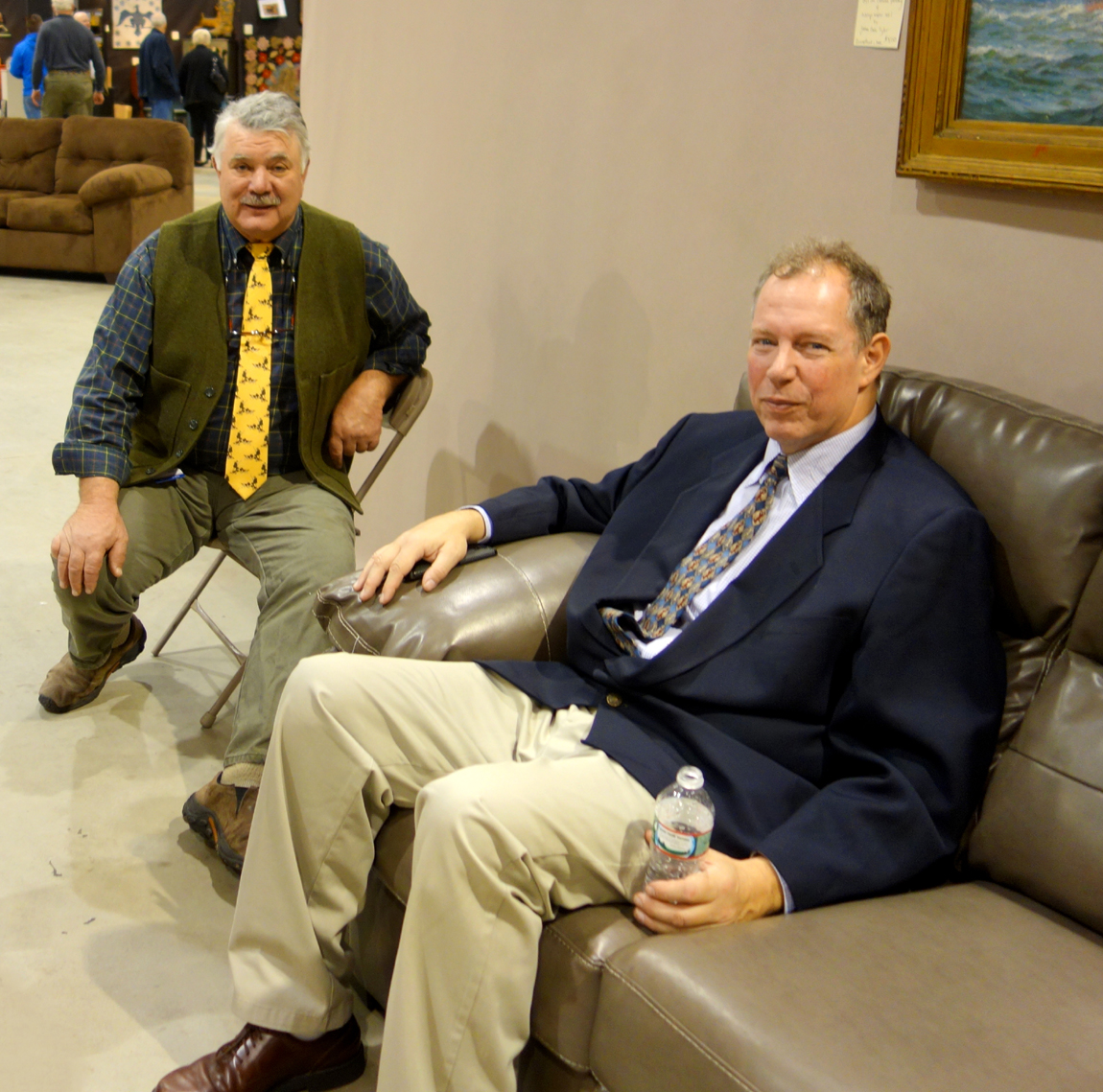
Show manager Bob Bockius looks more comfortable on the sofa compared to Hilary Nolan perched on a small folding chair.
“There are only about three things in the booth that have been shown before,” Hilary Nolan said, adding, “I have been on the road and have come up with many nice finds.” He pointed out a set of four Bermuda side chairs, noting, “I had a customer coming in to look at them but he was unable to make it to the show, but bought the chairs over the phone,” he said. Other furniture in the booth included a Connecticut cherry candlestand with inlaid and carved legs, circa 1790–1800, and a maple butterfly table, all original, old refinish, dating circa 1740–50. A two-door cupboard with shaped shelves, original blue with yellow interior, was against the back wall and Hilary noted, “I sold that cupboard about 25 years ago and was just able to buy it back.” The family dogs were split up this time, with the older making the trip to York and the puppy, Musket, remaining at home with Paulette.
The principals of Stephen-Douglas of Rockingham, Vt., had been on the road for a week, having taken part in the Delaware Antiques Show and then moving on to York, where they offered an early child’s settee, seal trade signs and a stack of five oval storage boxes, graduated, and ranging in color from two shades of blue to yellow and red. An early Nineteenth Century hutch table had an old painted surface, two large carved wood roosters retained the original painted surfaces and one of the game boards offered was in salmon and black squares.
Greg K. Kramer & Co., Robesonia, Penn., had an early sign that read “Hlohela Farms, The Woodards” with a cow in the center, and one of the tall clocks was from Chester County, Penn. With an origin of Lancaster County was a walnut, inlaid country table, circa 1770–90, all original, and a green painted plant stand was loaded with decoys, doorstops and several decorative cast ion pieces.
“Which is the rarest and most important butter stamp in the large display of stamps here at the show, and how many more do you have at home?” was asked of John H. Rogers, Elkins, N.H. He immediately selected the lollipop stamp that was pictured in the Paul Kindig book, as well as pointing out a stamp with “the largest tulip I have ever seen with a heart on the reverse,” and a special small heart-shaped stamp that was from the collection of Gene King. Along with all the small objects in the booth, John offered a slant front desk with fitted interior, birch, dating circa 1825.
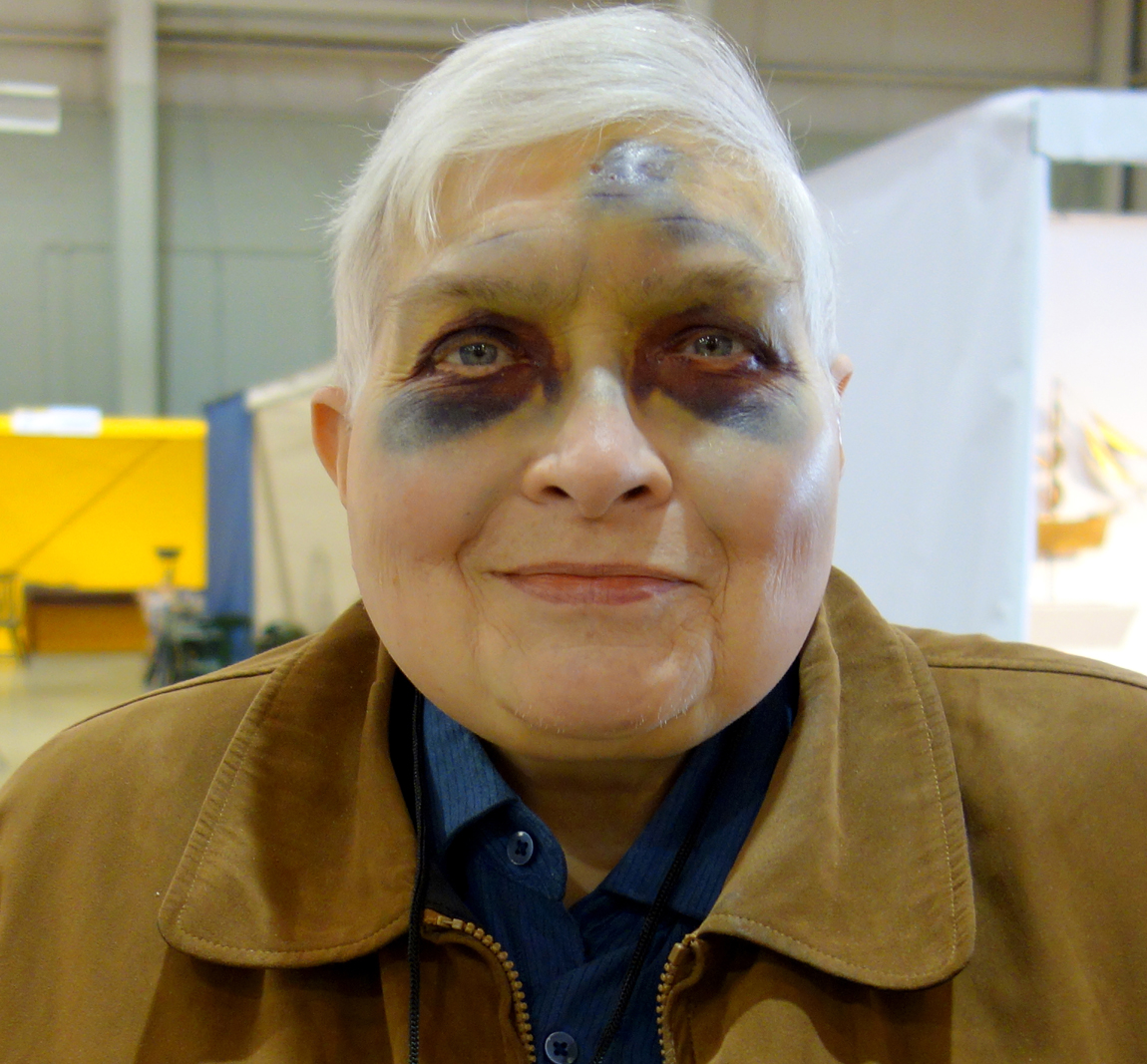
In case you do not recognize this dealer, he is “Smitty” Axtell, and it is not true that he went trick or treating as a raccoon on Halloween and has not washed his face since then. He did take a nasty fall in his shop a short time ago and he looks great in this photo compared to the day after the accident.
A cast iron bench and pair of armchairs, white painted and in the fern pattern, were a reminder of summer in the booth of Mario Polo of Holliston, Mass. Also shown was a child’s dresser in blue, with floral decoration and attached mirror, and a pair of horse heads, cast iron, once on top of a hitching post.
Joseph J. Lodge, Lederach, Penn., showed a country Queen Anne Eighteenth Century tap table with a one-board tiger maple top, red painted base, circa 1785, and a polychrome painted pair of peacocks, about 30 inches tall, and all original. A paint decorated corner cupboard with French feet, salmon with black decoration, circa 1830, was from Lehigh Valley, Penn.
Thomas Longacre of Marlborough, N.H., showed a Black Hawk horse and sulky weathervane with gilded surface dating from the Nineteenth Century, a hooked rug depicting two opposing cats, New England origin, and a Federal yellow painted and decorated dressing table with single drawer on top, scrolled backsplash, circa 1825 and of Maine origin. Across the aisle, Beverly Weir-Longacre set up her Christmas shop and her herd of followers came in and began stripping ornaments from the several decorated feather trees. Tom mentioned that “I thought she was going to be farther away from my booth so I would not have to watch the feeding frenzy as the show opens.”
A seated Indian with bow and arrow in hand, zinc, pine and paint, was made by the Zinc Roofing & Ornamental Works, Chicago, circa 1876 and displayed at the front corner of the booth of Kelly Kinzle of New Oxford, Penn. The figure was exhibited at the 1876 Centennial Exhibition in Philadelphia. Hanging on the back wall was an oil on Masonite of a “Winter Landscape” by Eric Sloan, 32 by 39½ inches and in a barnwood frame made by the artist. A scalloped top tea table, Connecticut, circa 1820, was in cherry with the original brasses; a Southern sideboard in walnut and yellow pine, with light and dark wood inlays, original brasses, 72 inches wide, dated circa 1810, and a Lancaster County storage box, late Eighteenth Century, was decorated and attributed to the “Compass Artist.”
The Norwoods’ Spirit of America, Timonium, Md., had a very nice toy sleigh with swan head runners, painted white with decoration, circa 1800, complete for the coming season with Santa aboard, and a violin trade sign with the instrument attached to carved wood sheet music. A couple of booths away, Judith and James Milne, At Home Antiques, Kingston, N.Y., offered a Nineteenth Century carousel horse carved by Charles Dare, Brooklyn, N.Y., white painted, and hung on the wall was a rare painted valence, Pennsylvania origin, all original, circa 1840. A Nineteenth Century American cupboard with two doors was painted in old red.
Tex Johnson & Son, Adamstown, Penn., filled two booths, the first with a large collection of wooden objects, including breadboards, bowls and cabbage slicers, along with a grouping of tin cookie cutters. In the adjoining booth, the back wall was covered with a very colorful quilt with a red, yellow and green eagle in each corner surrounding a large center medallion.
Axtell Antiques, Deposit, N.Y., had a circa 1720 tavern table across the front of the booth, a piece with a one-board top with breadboard ends, one drawer, stretcher base black painted and of New England origin. A hand forged iron trivet in the shape of a heart had four legs and dated from the Eighteenth Century, and a chip-carved tape loom board in white pine dated circa 1722 depicted a dory, fish and people. It was in excellent condition. An oversized wooden trencher was filled to capacity with an assortment of butter stamps with many different designs.
Ken and Robin Pike traveled to York form Nashua, N.H., with a nice selection, including a circa 1850 hooked rug depicting a woodland scene with a deer in the center, mounted for hanging, and a papier-mache wreath of painted fruit with a large red bow attached at the bottom. A reminder of winter was a pair of Nineteenth Century ice skates with acorn tip, salmon painted, and a circa 1890 cutter sled by Paris Mfg, red painted with water lily decoration. Andrea Hollenbaugh Antiques of New Oxford, Penn., had a graduated stack of zoo blocks, paper litho on wood, among a selection of toys, along with a double teddy bear bell toy and a brass and iron store bell.
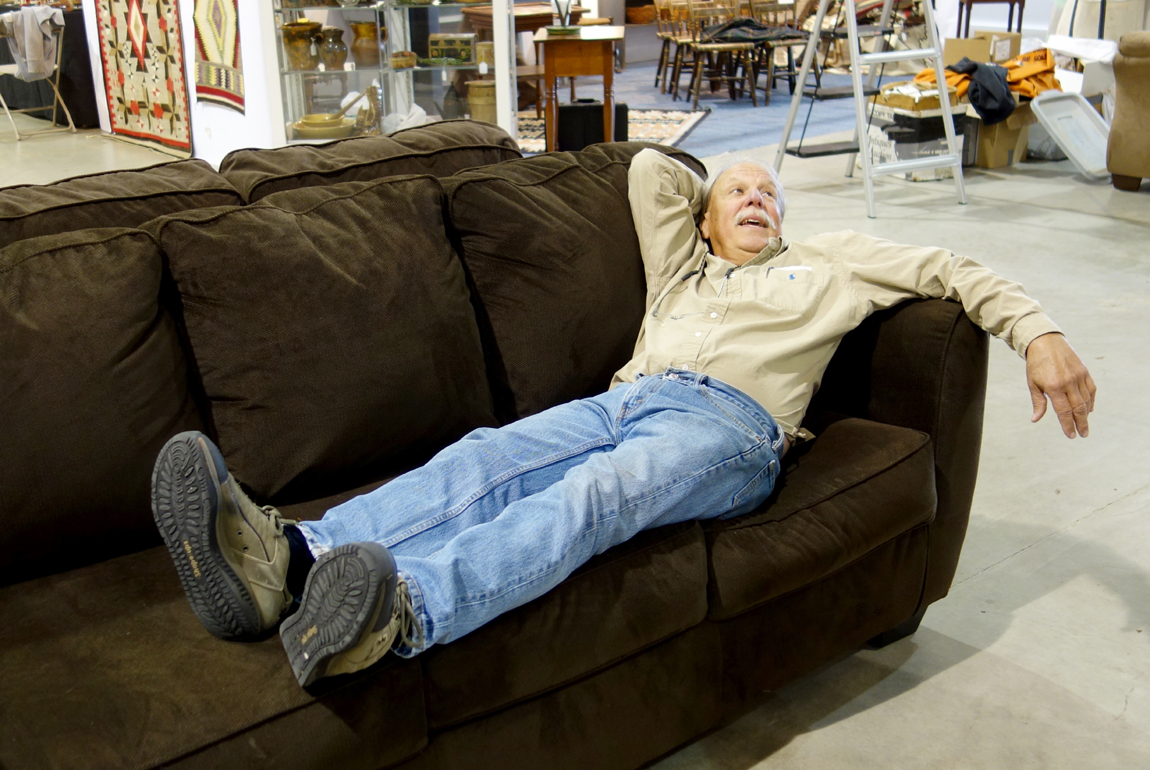
When it came time to relax, Jim Grievo took advantage of the couches that were brought in to fill and provide seating in the center aisle of the show.
Thomas M. Thompson of Pembroke, N.H., had a well-filled booth, including a selection of five pig cutting boards, a “Rabbit” sign with a pair of rabbits drawn on the sign, ten graduated litho on wood alphabet blocks and a wood bin painted with a rooster on a fence with chickens in the foreground. Dennis Scott Antiques & Country Furniture & Accessories, Greenwich, R.I., had a drop leaf harvest table, 72 inches long, probably New England, circa 1830–40, set with eight pewter plates and the same number of bone-handle knives, and against the back wall was a Queen Anne highboy in maple with walnut banded drawers, circa 1770, of New England origin.
Among the pieces of furniture in the booth of Dennis and Valerie Bakoledis, Rhinebeck, N.Y., were a Queen Anne swing leg, drop leaf table in cherry, New England, and an Eighteenth Century tall chest with fan carved center drawer and pad feet.
DBR Antiques – Doug Ramsay, Hadley, Mass., was having a good show and by noon on opening day had sold two weathervanes, a whale and a blacksmith at his anvil, a pair of figural andirons depicting cowboys, two trade signs and a large quilting frame in the original robin’s-egg blue. Nancy and Craig Cheney, Mansfield, Ohio, offered a set of eight fancy chairs in the original condition and paint, and an 1848 blue and white coverlet with a house in each corner attributed to weaver Craig of Indiana.
Chuck White Antiques, Warwick, N.Y., showed a yellow dollhouse, circa 1890, that was made for a doctor’s daughter in Baltimore, and a country story counter, circa 1850, in off-white paint. Two milliner’s heads, ceramic composition, dated circa 1890–1910.
Banners and flags gave the booth of B. Hannah Daniel Antiques, Athens, Ala., a very patriotic appearance, with banners hanging across the front of the booth and a large country store flag holder filled to capacity with American flags on a Bucks County table measuring 8 feet long. The table, in old red painted surface, had a two-board top.
The next Greater York Antiques Show will by April 29–30, the location to be announced. For information, mitchelldisplays.com or 856-686-9000.
Gallery

